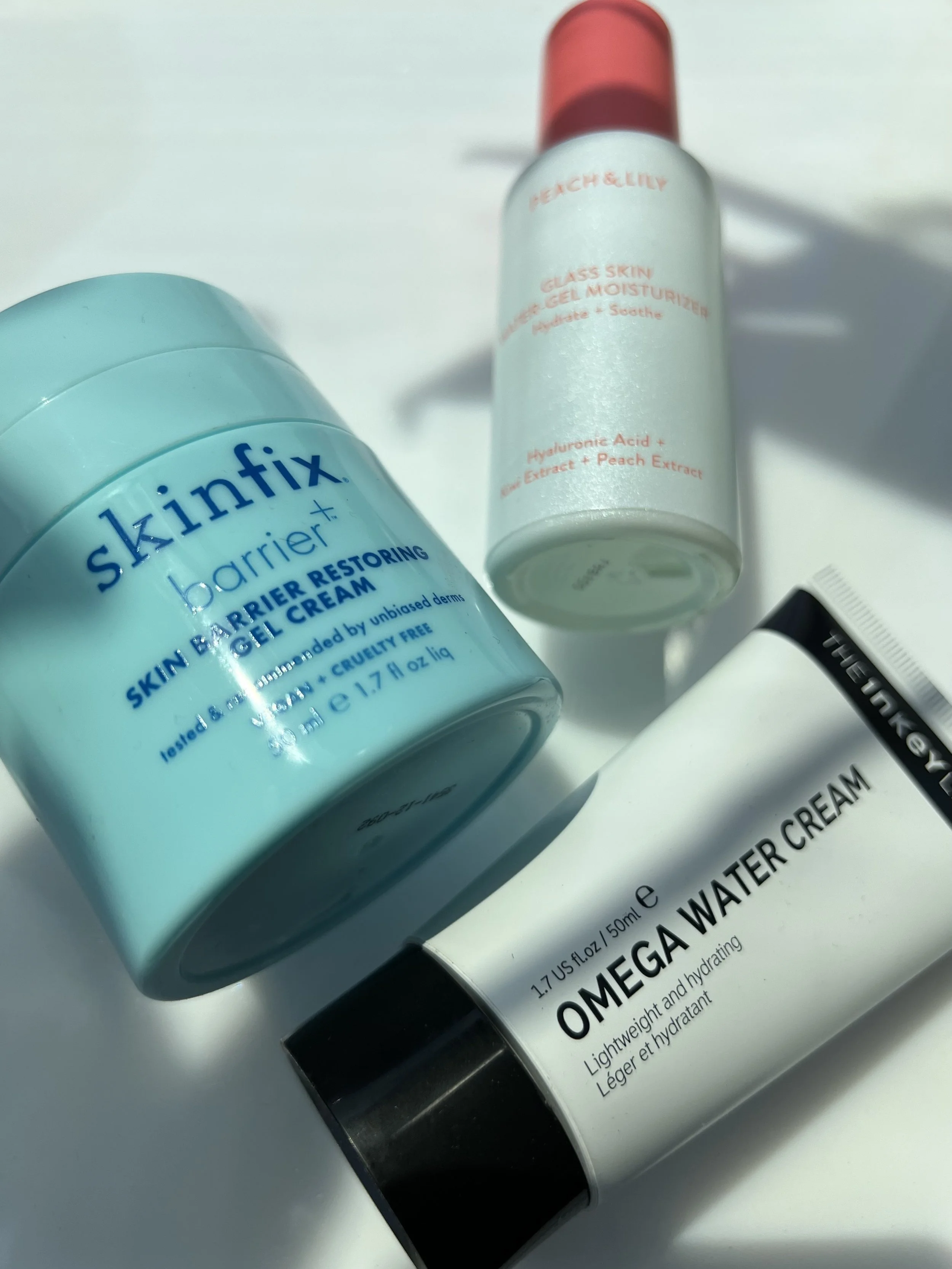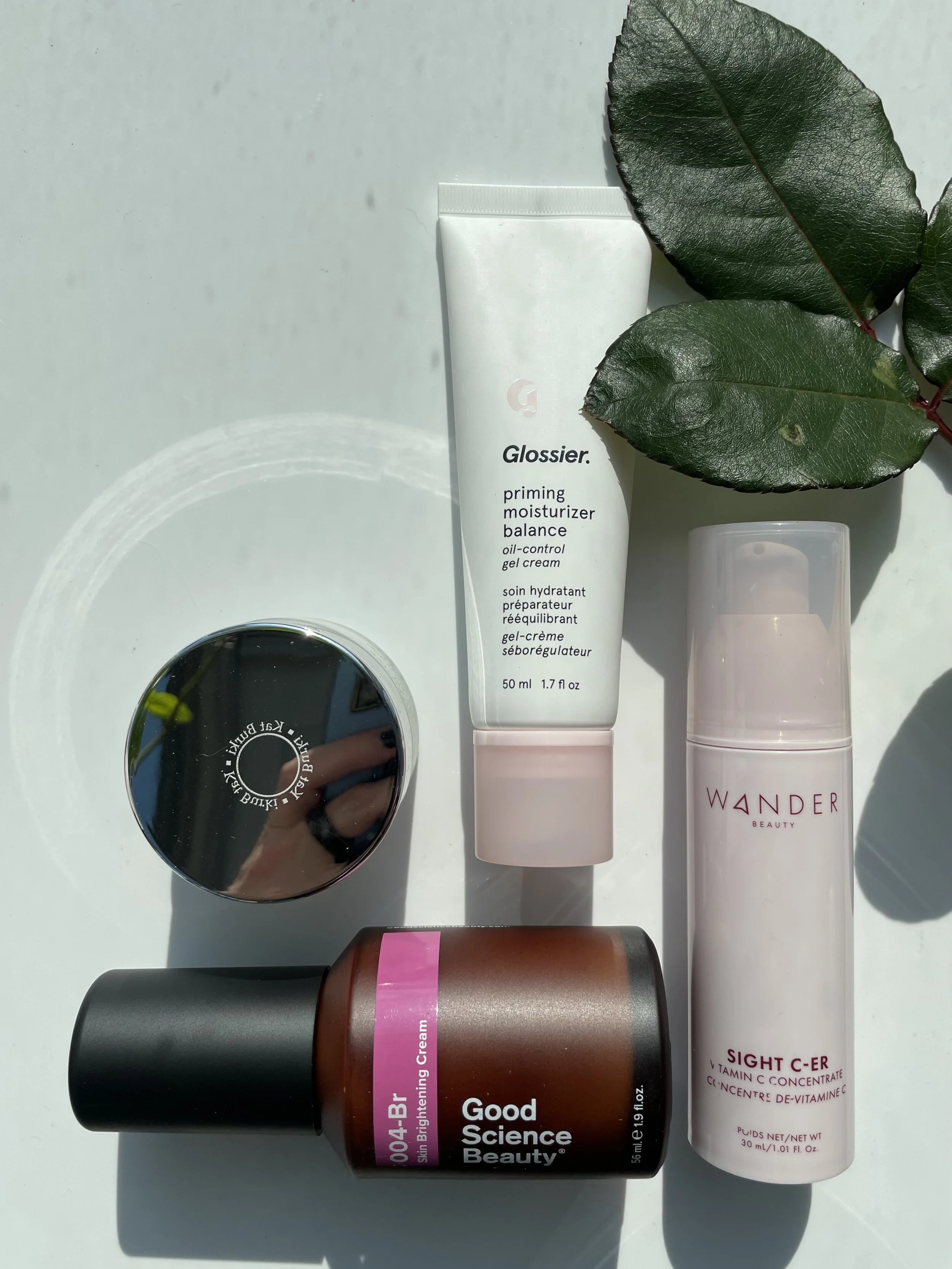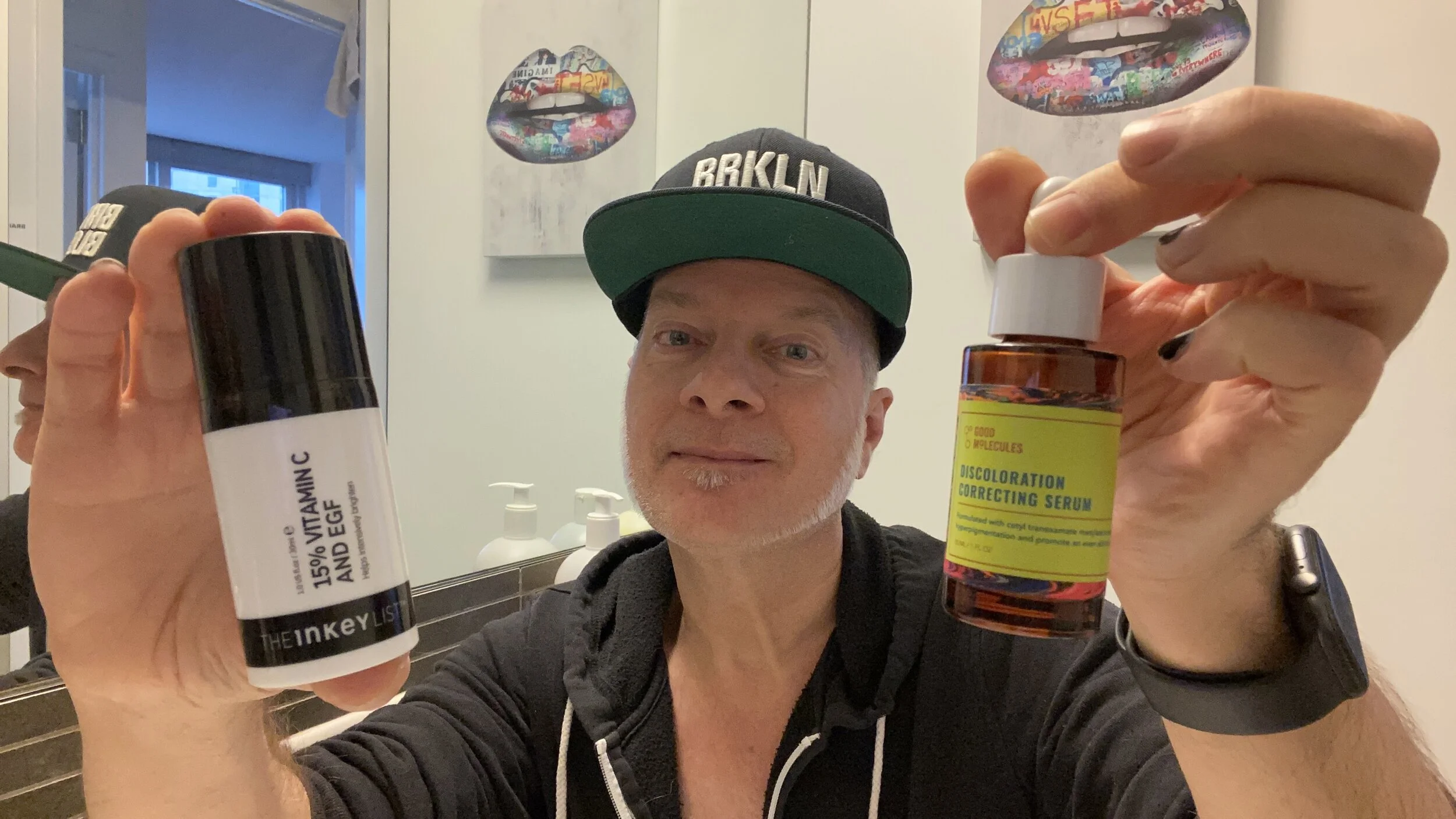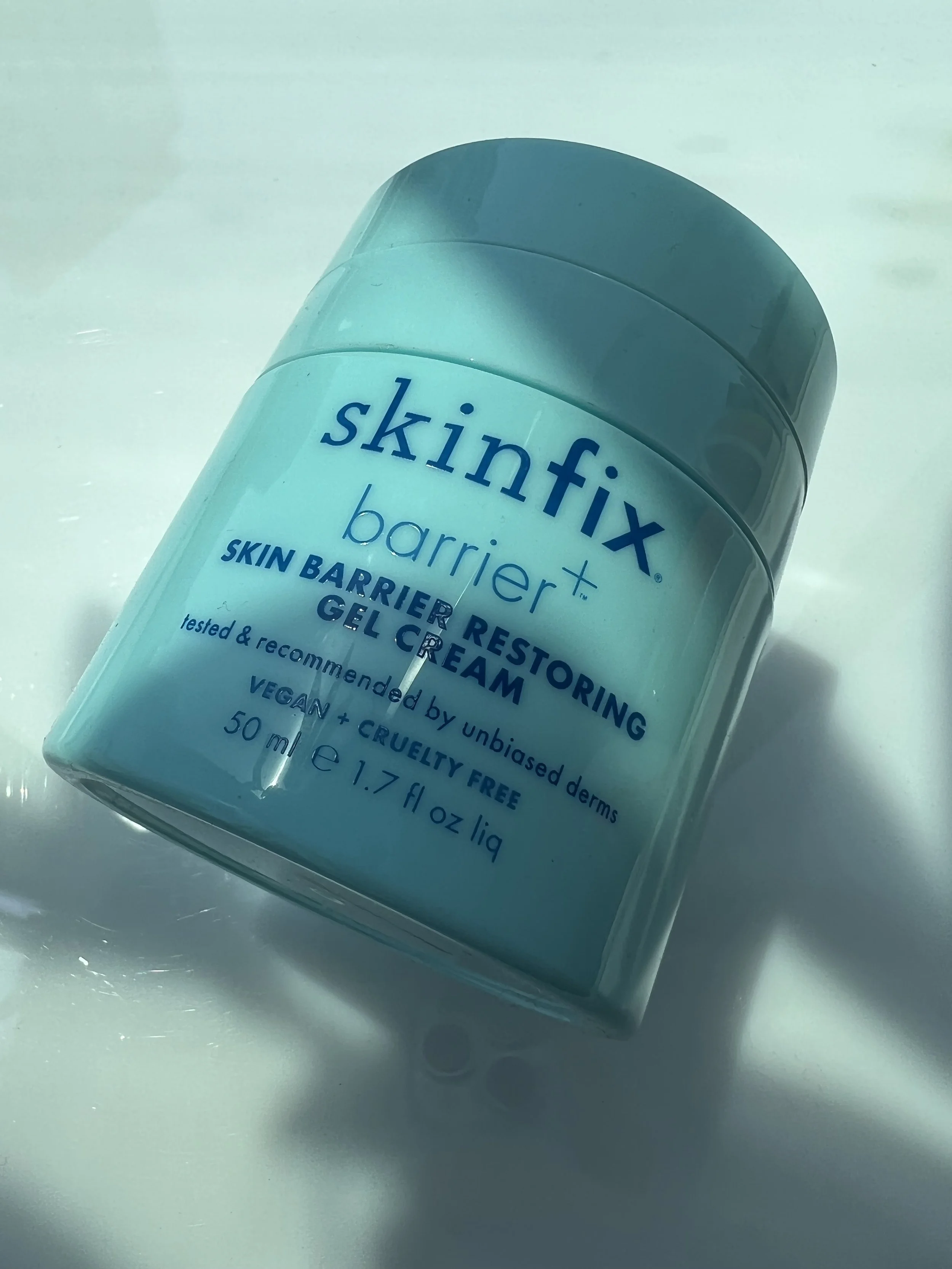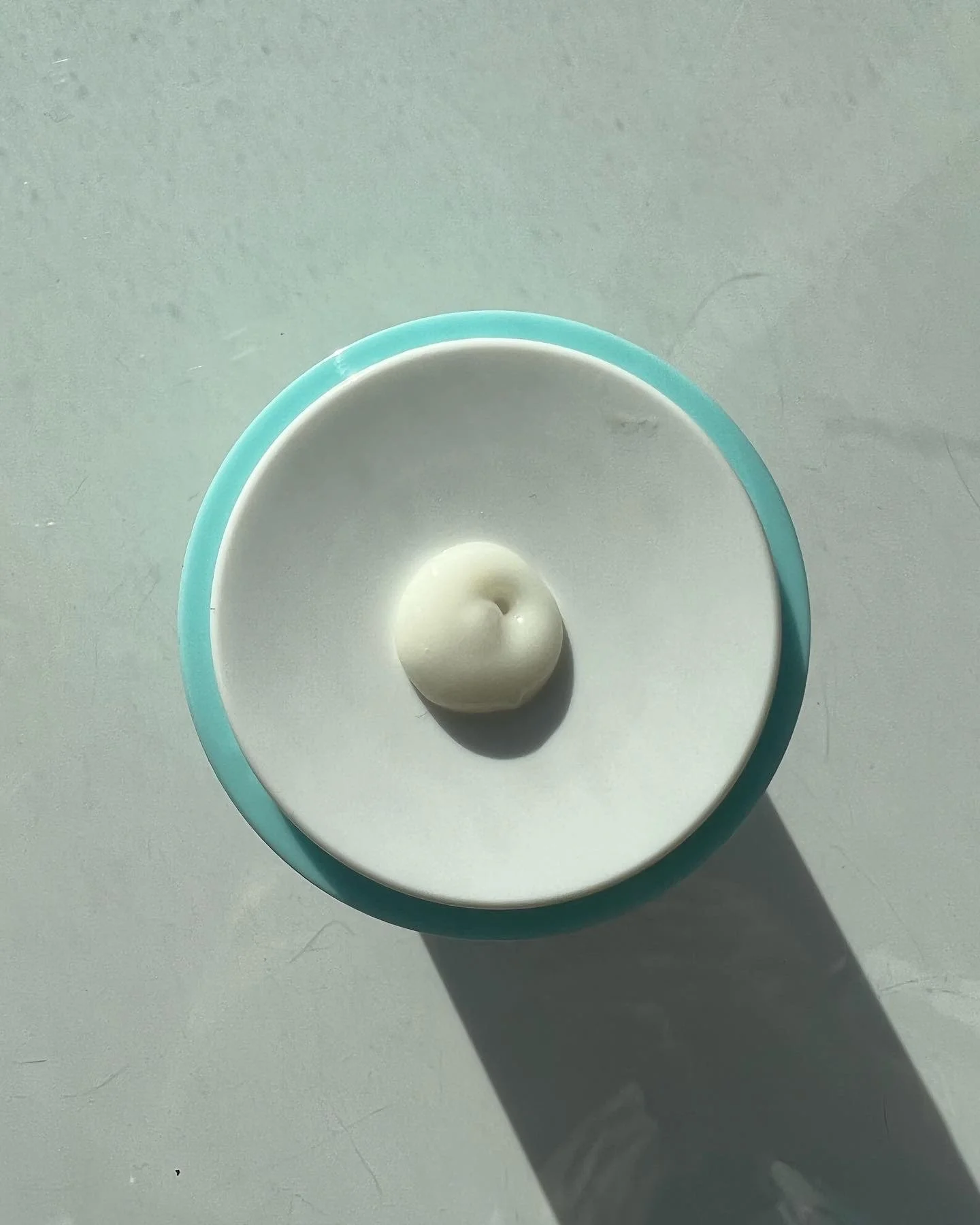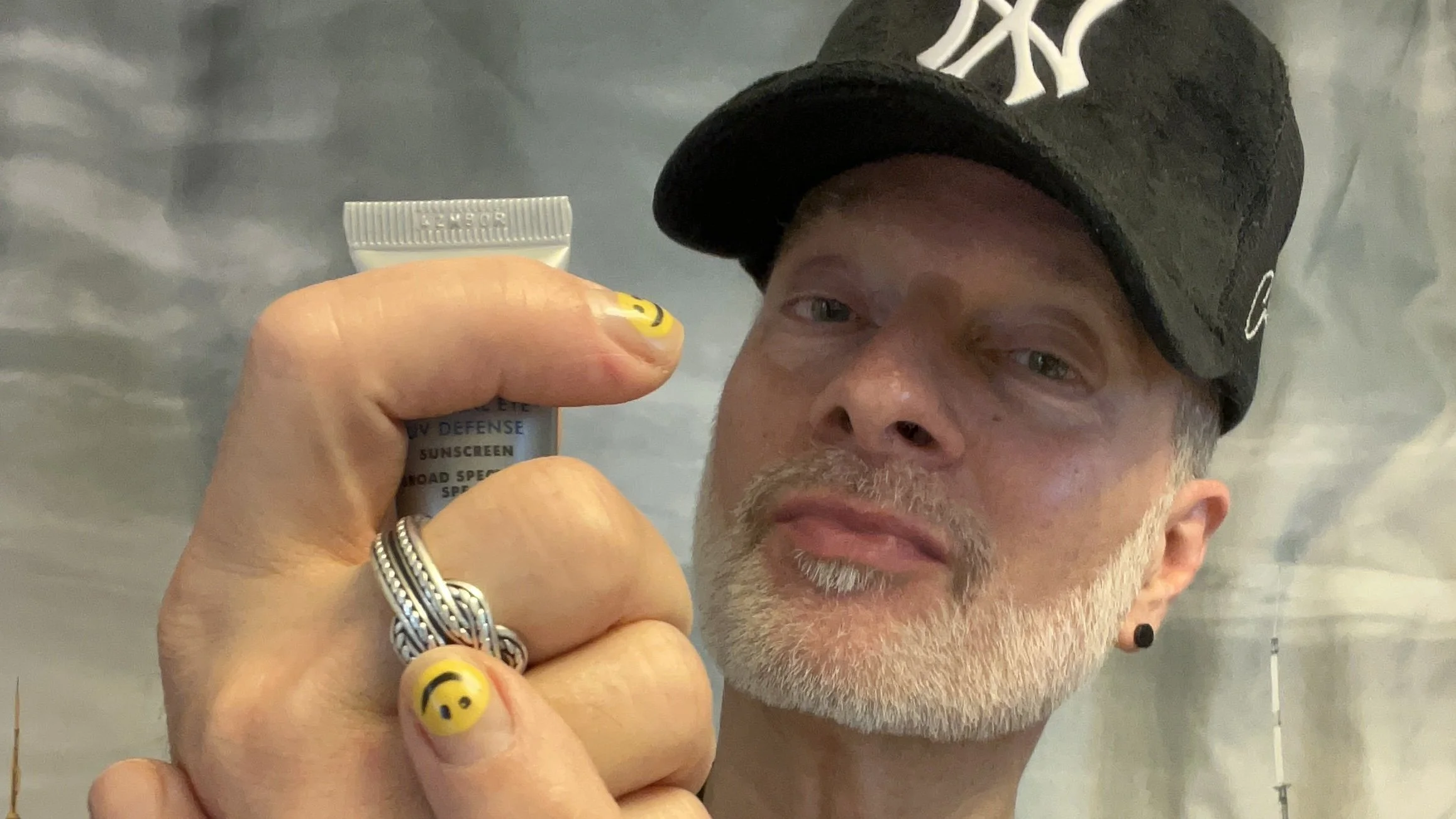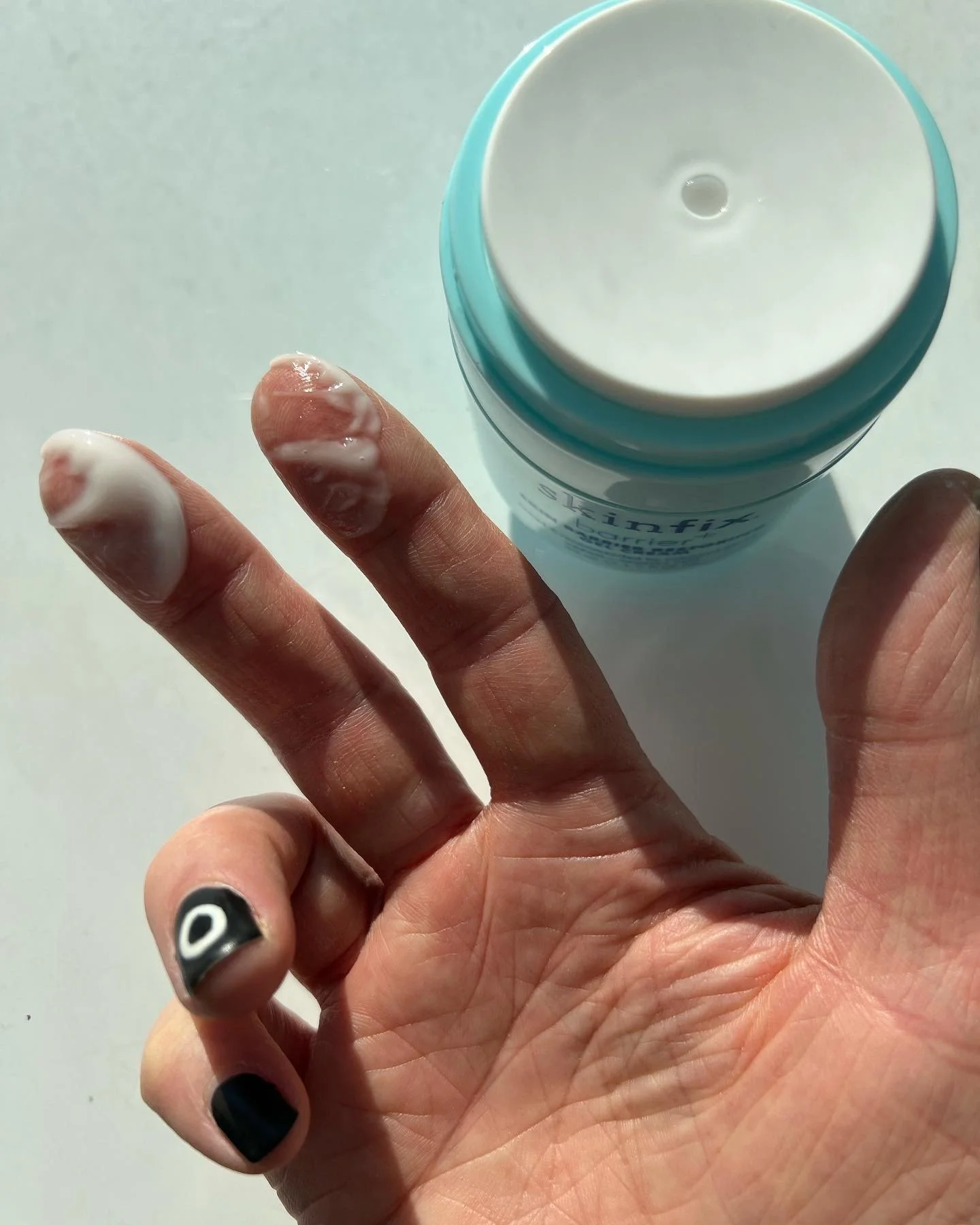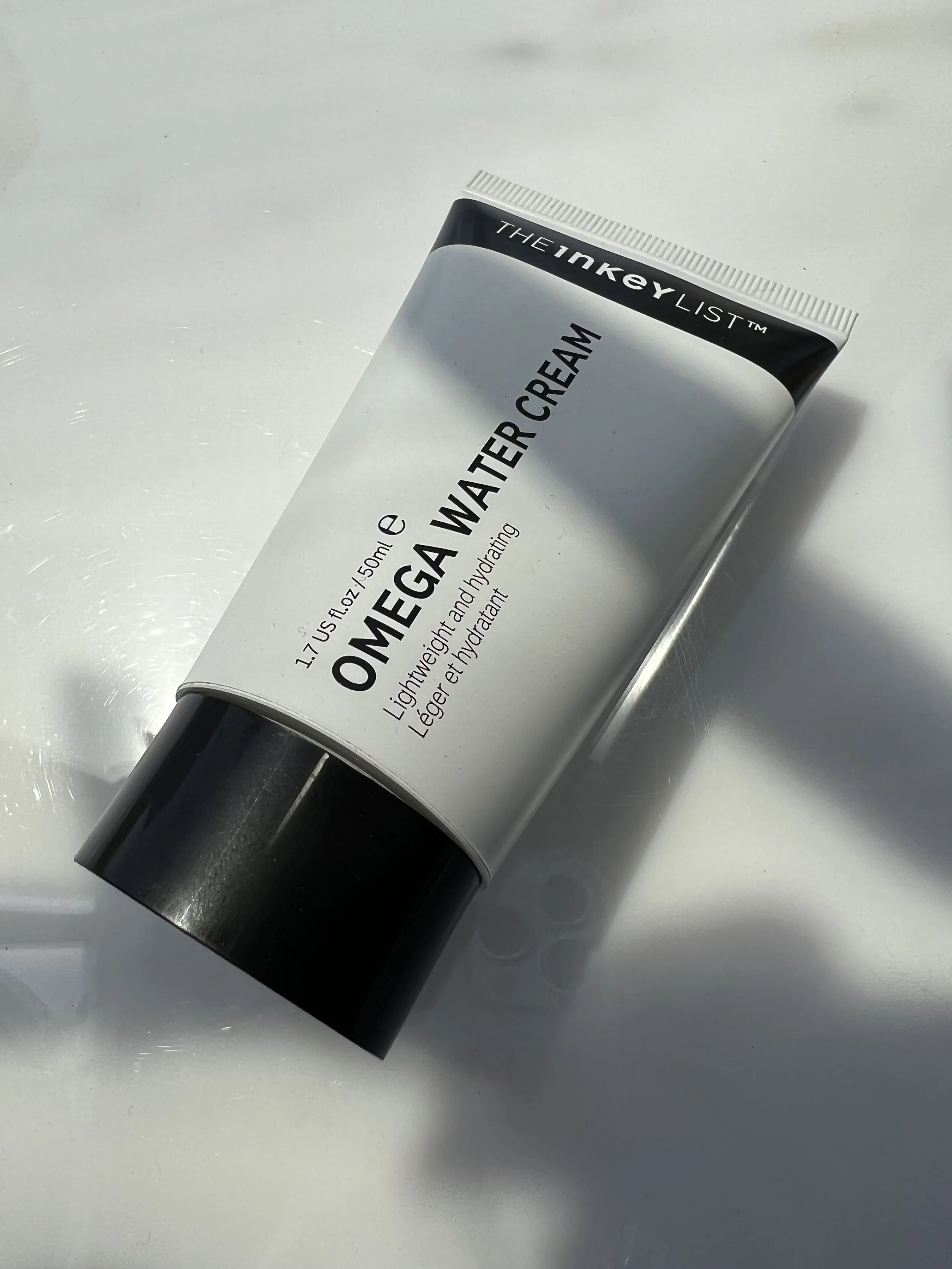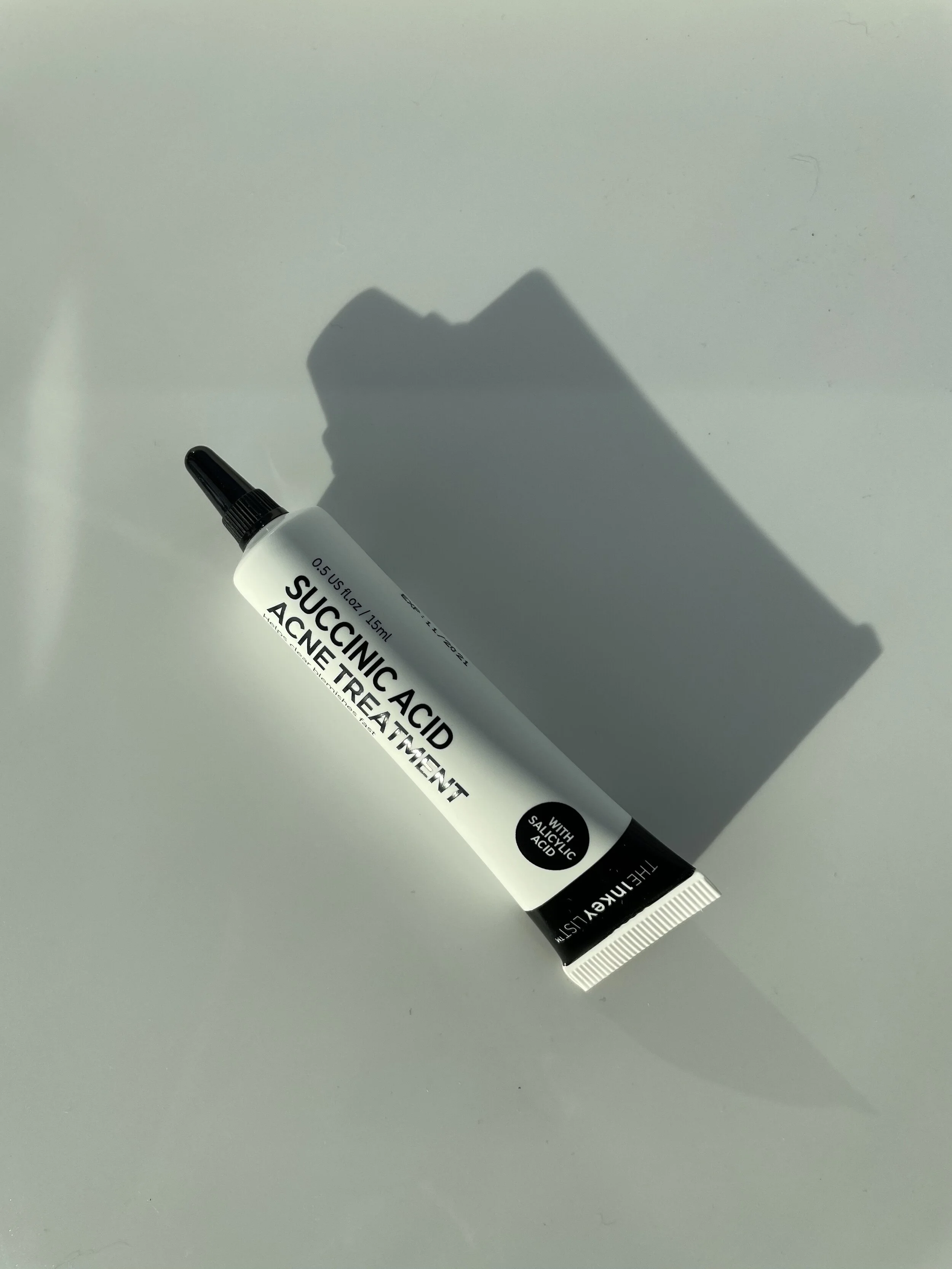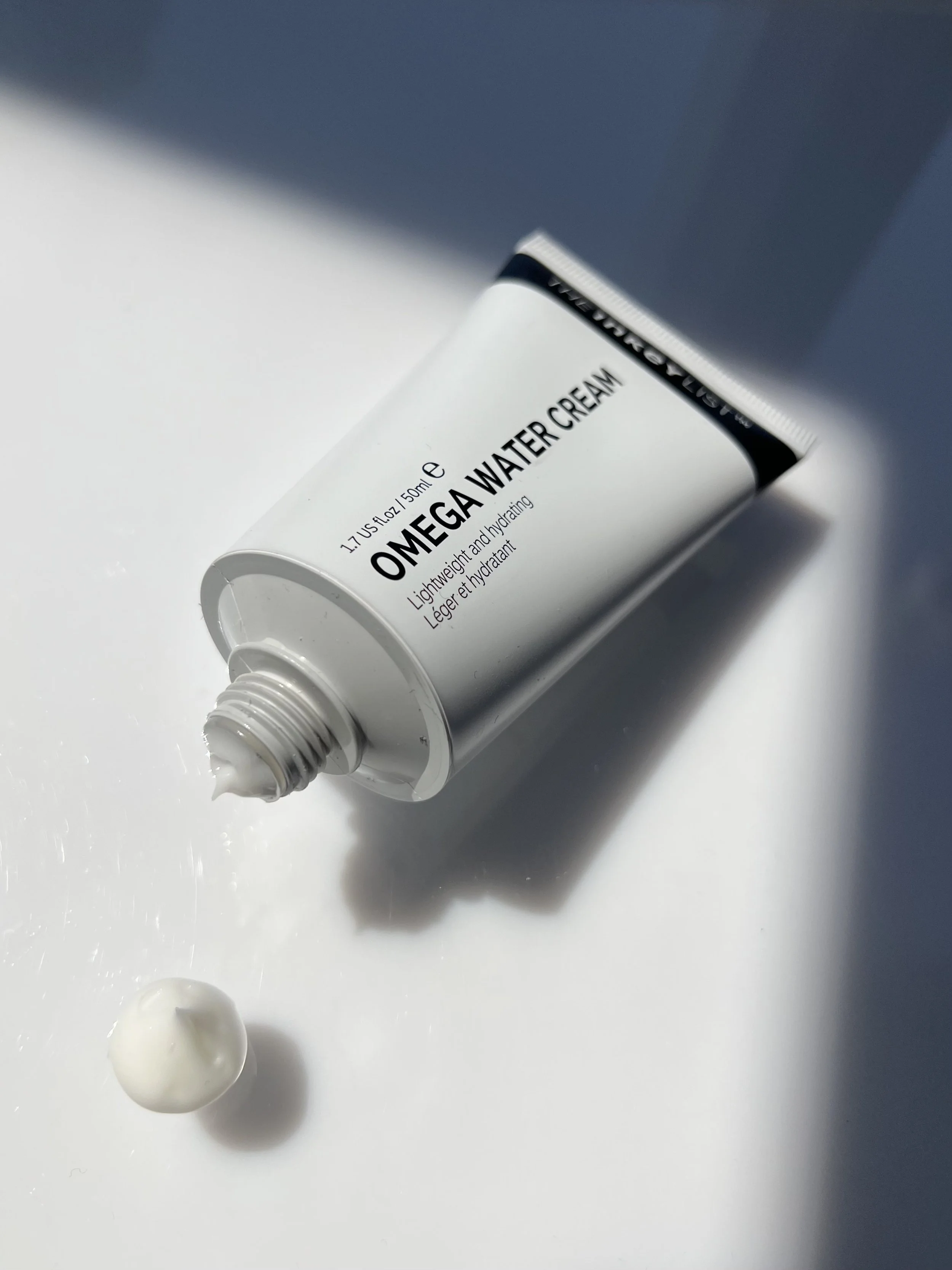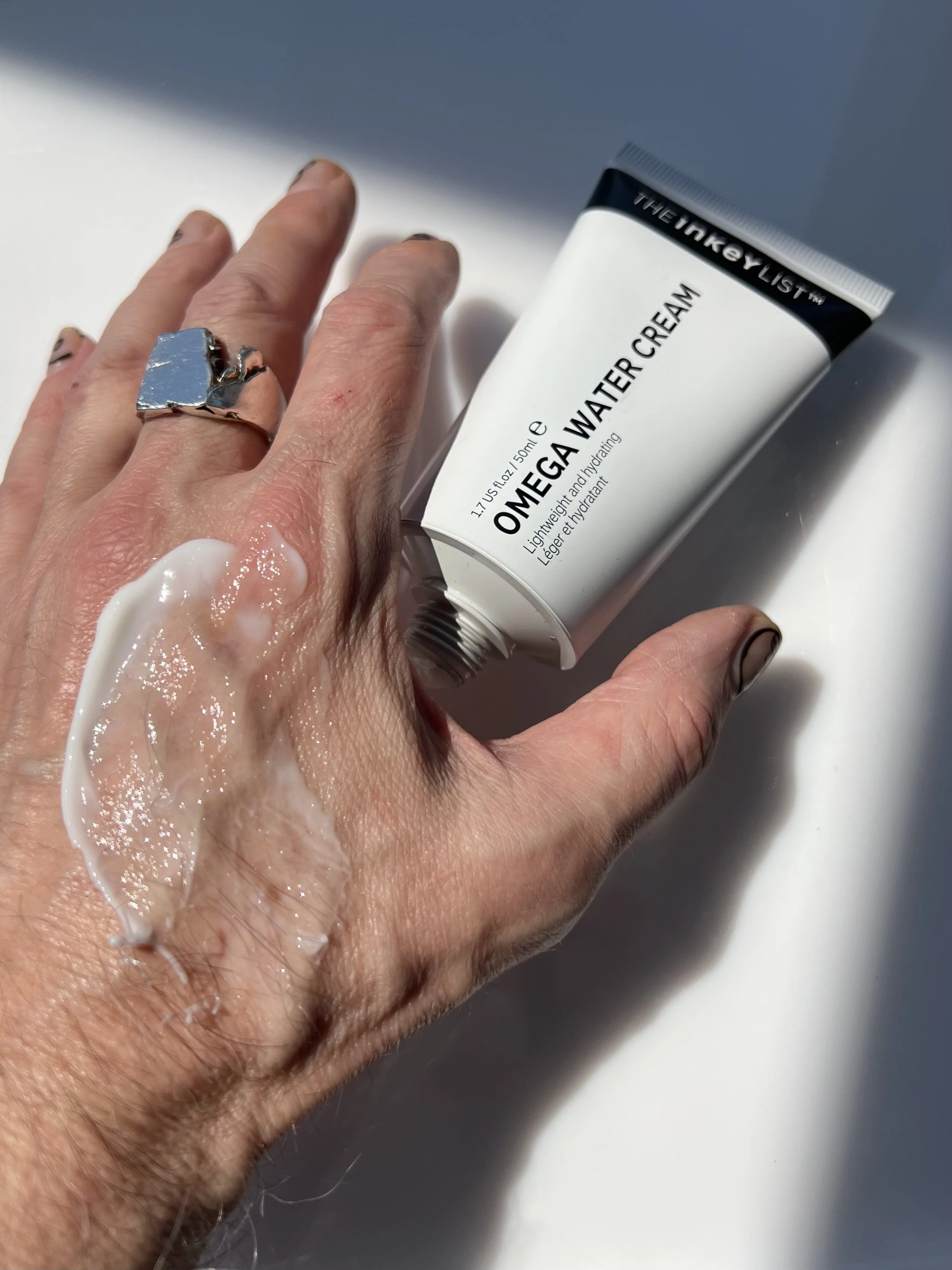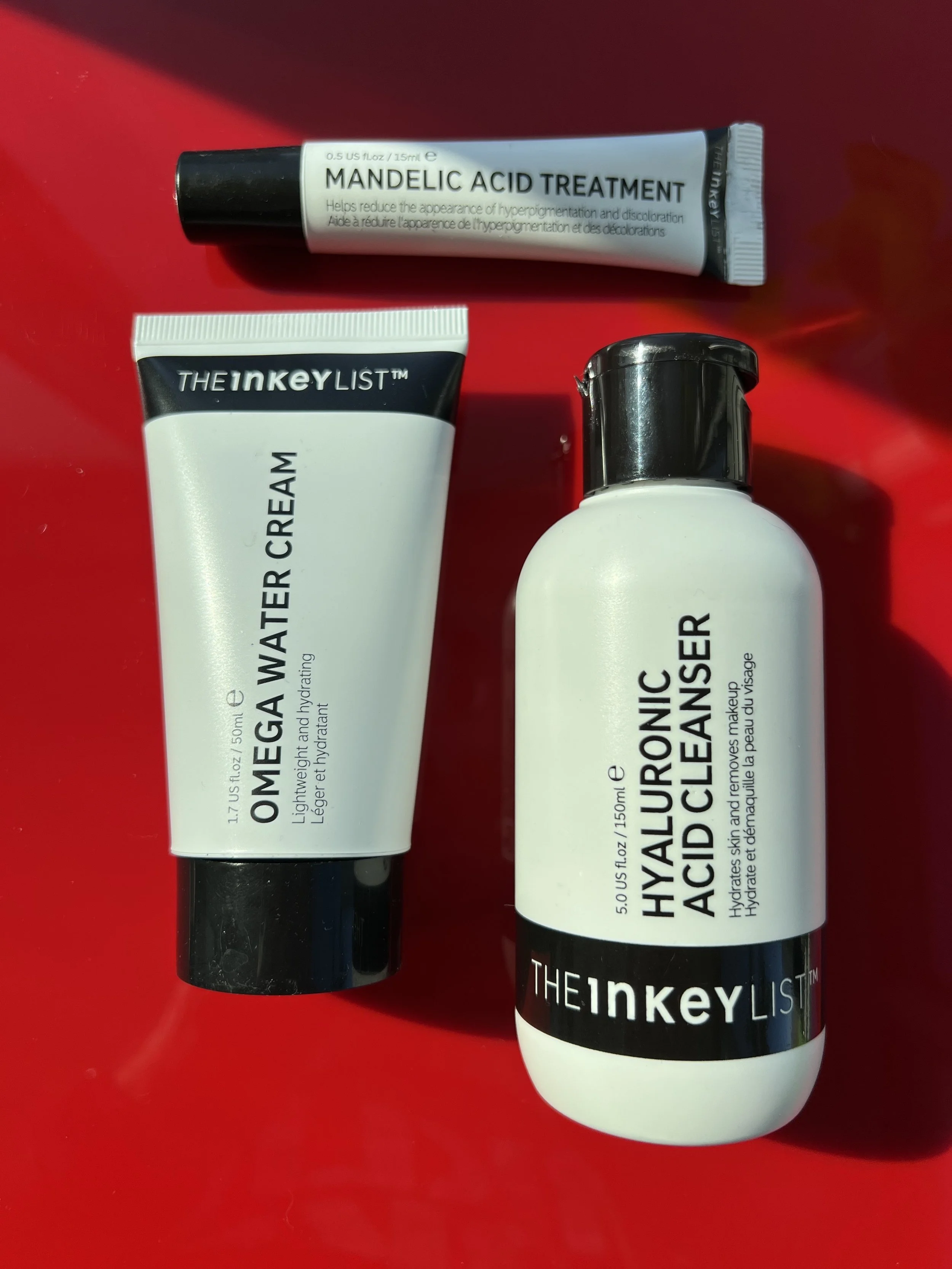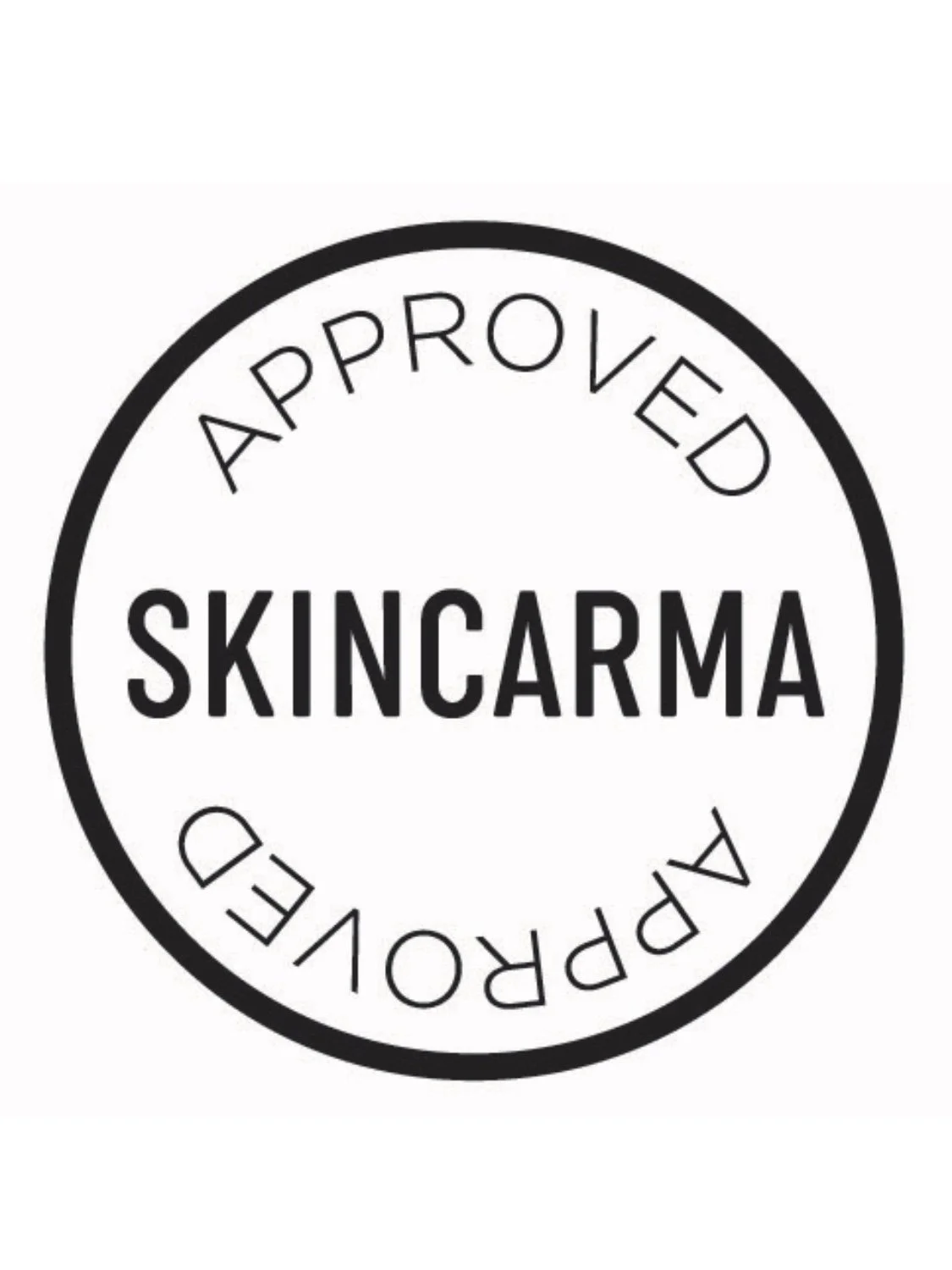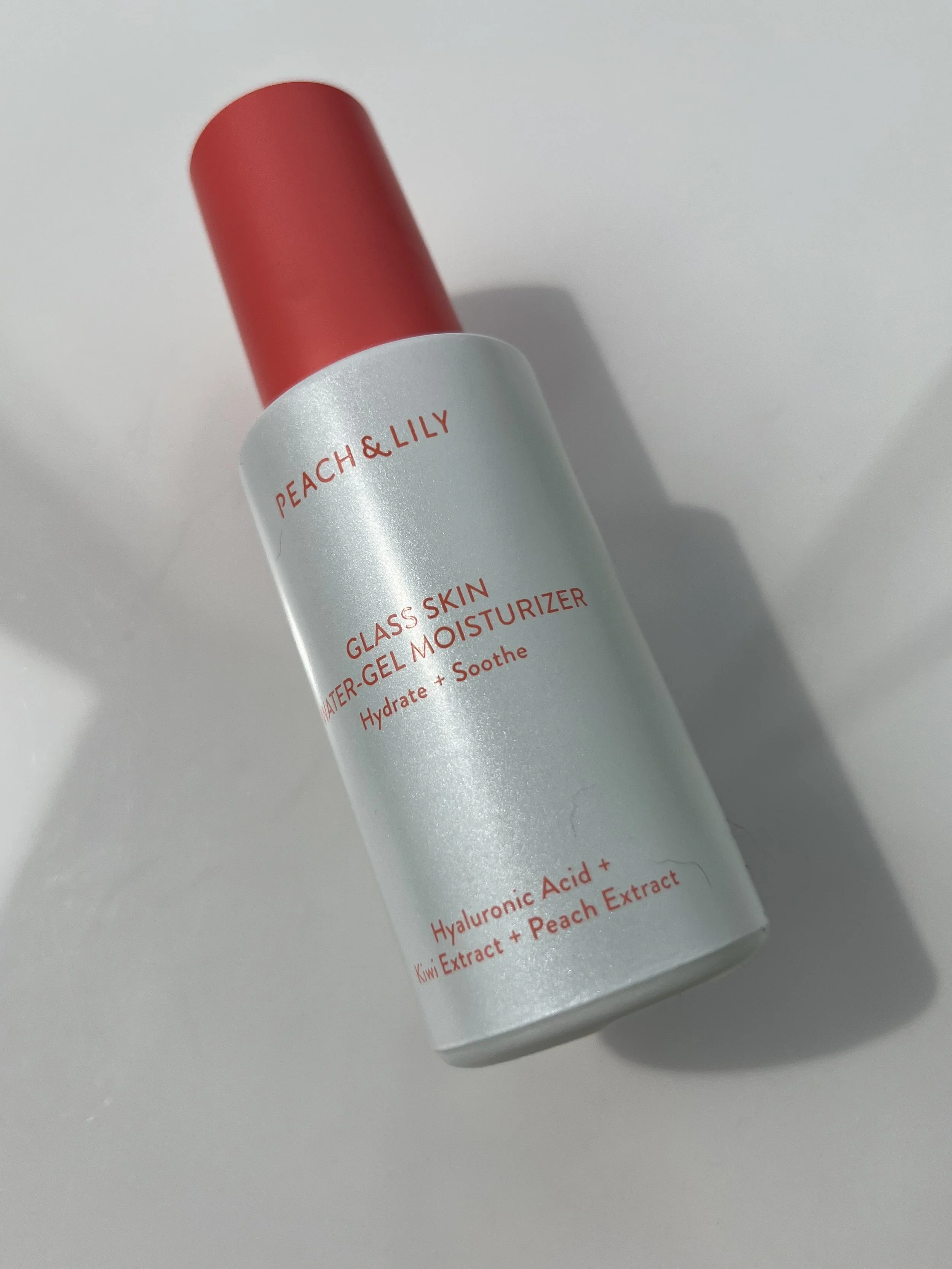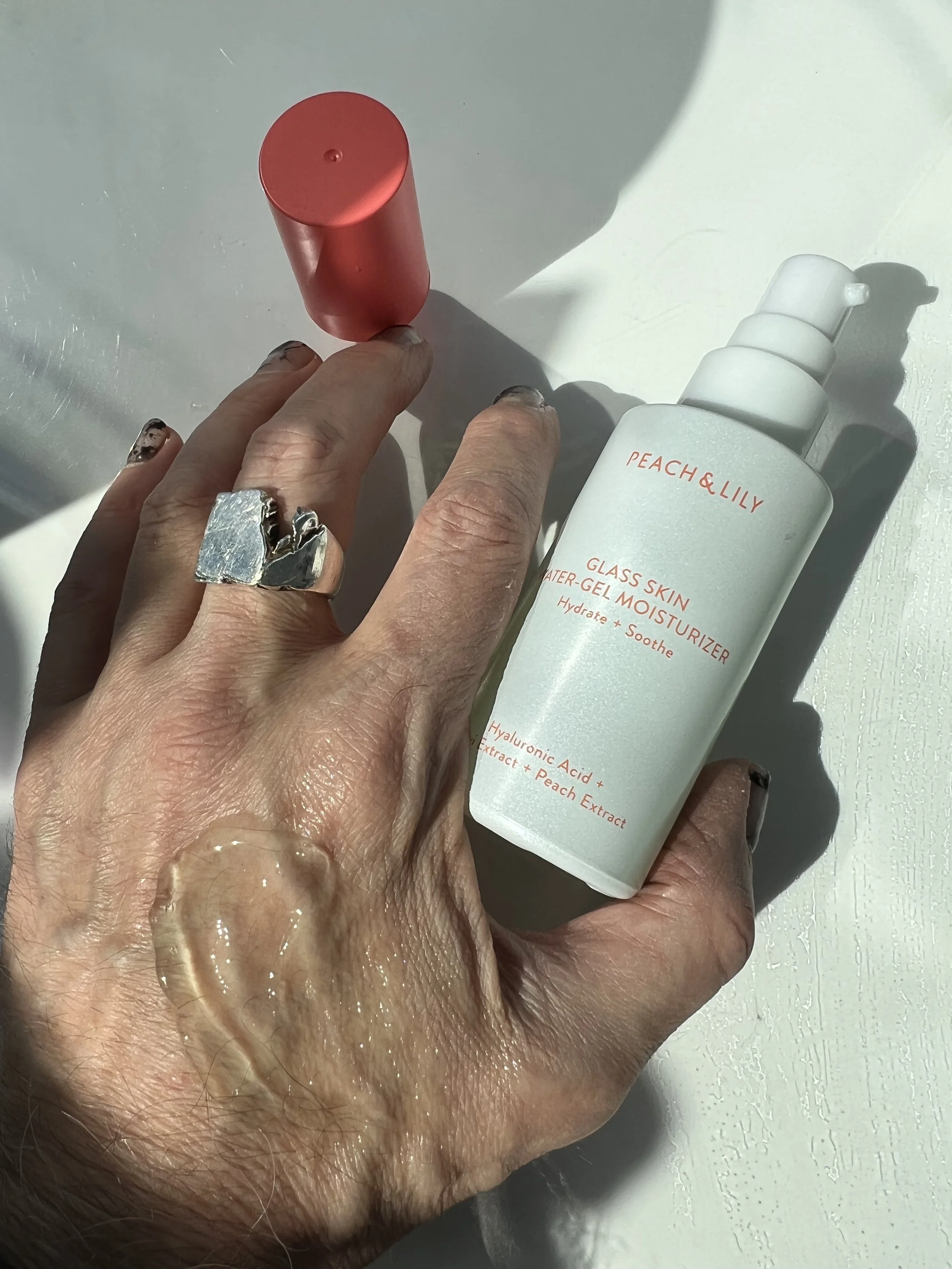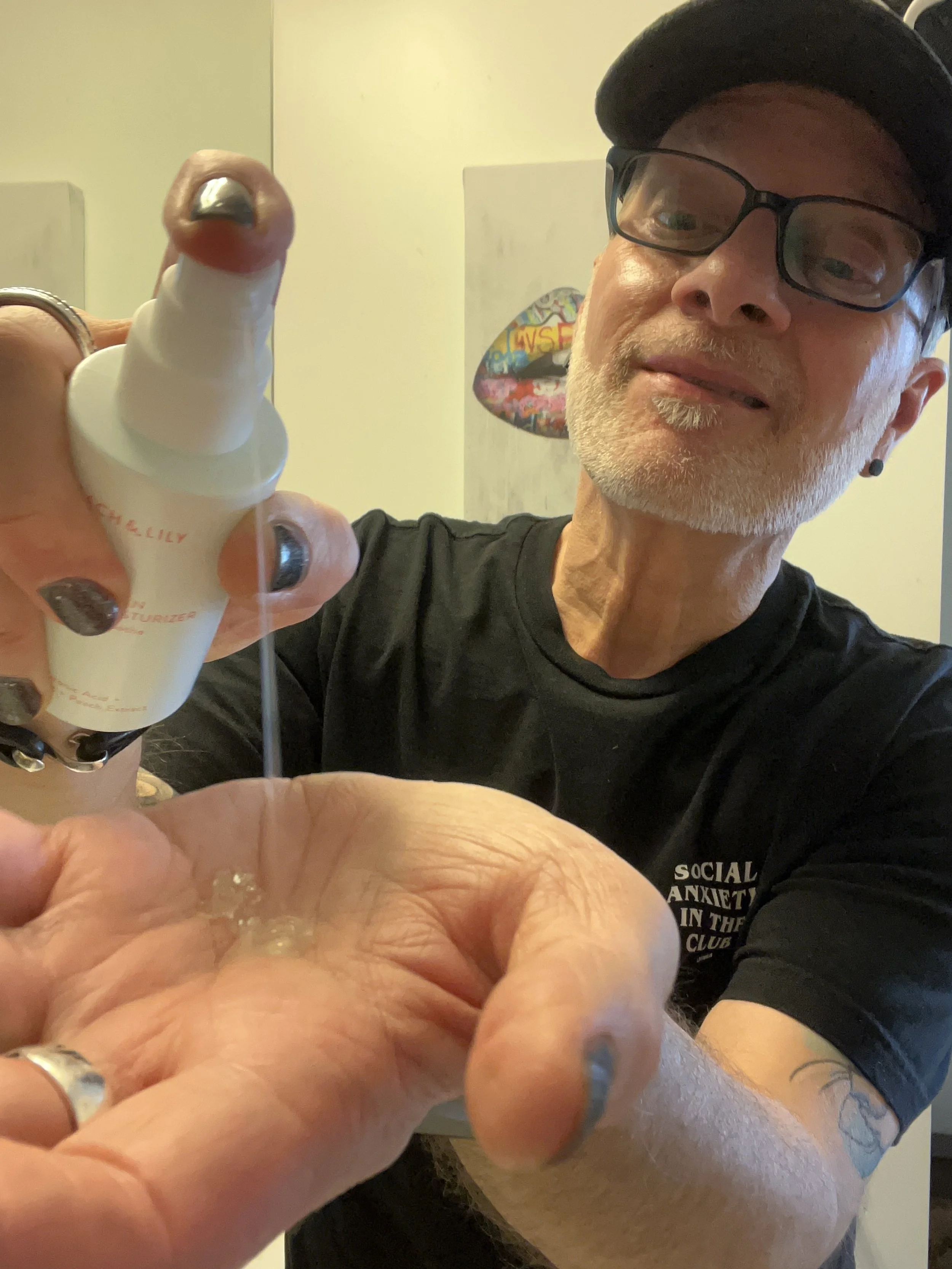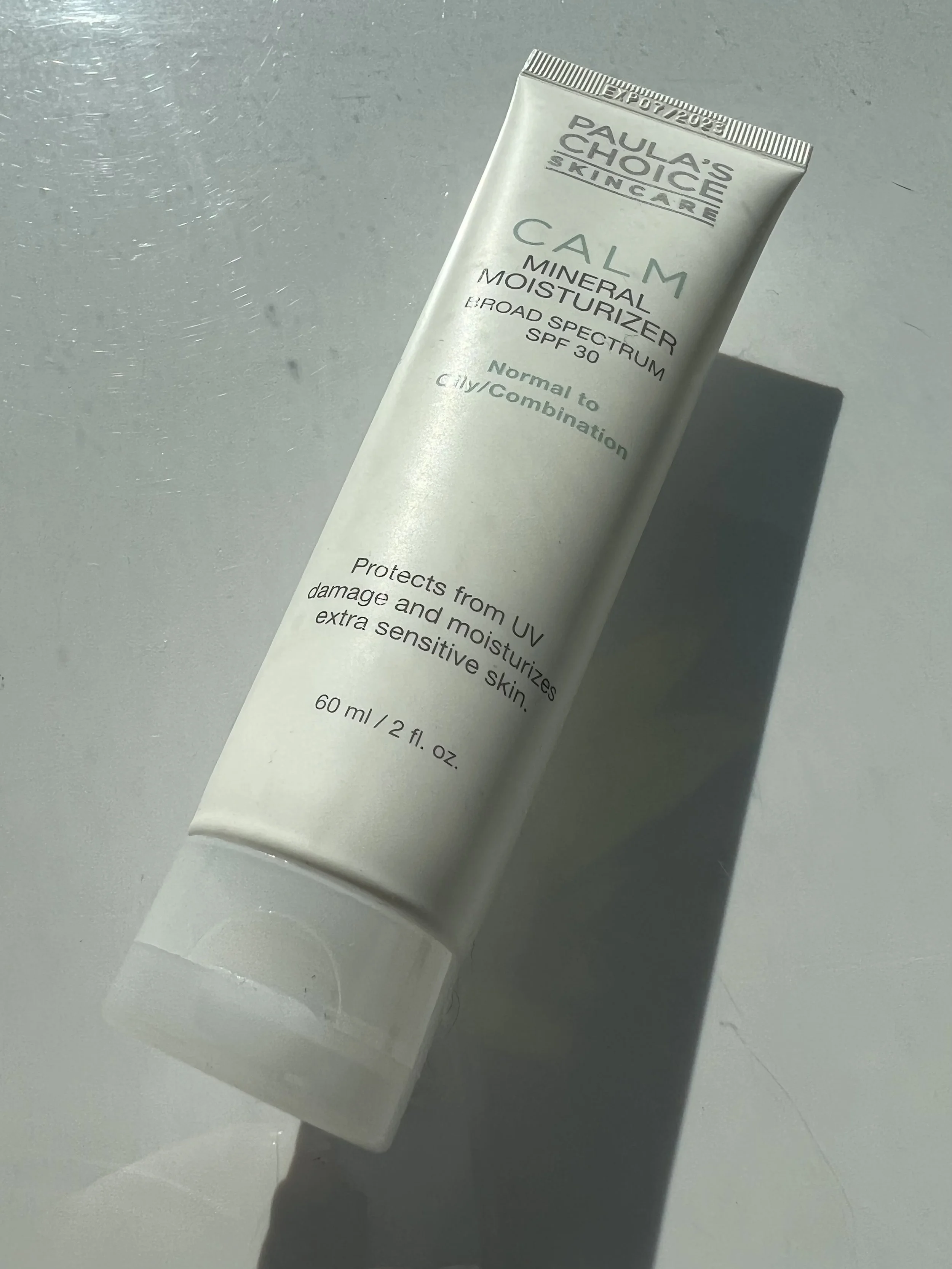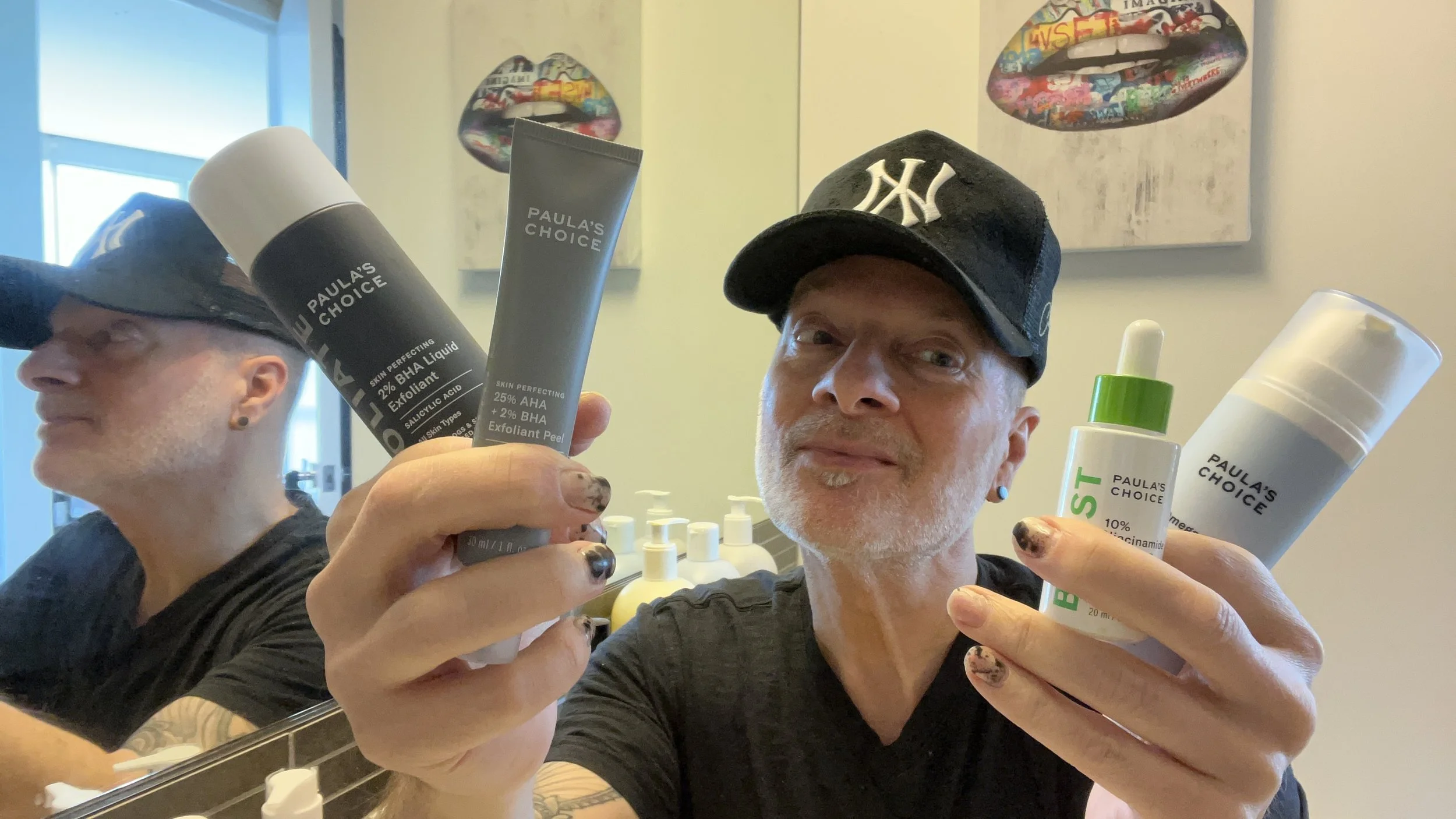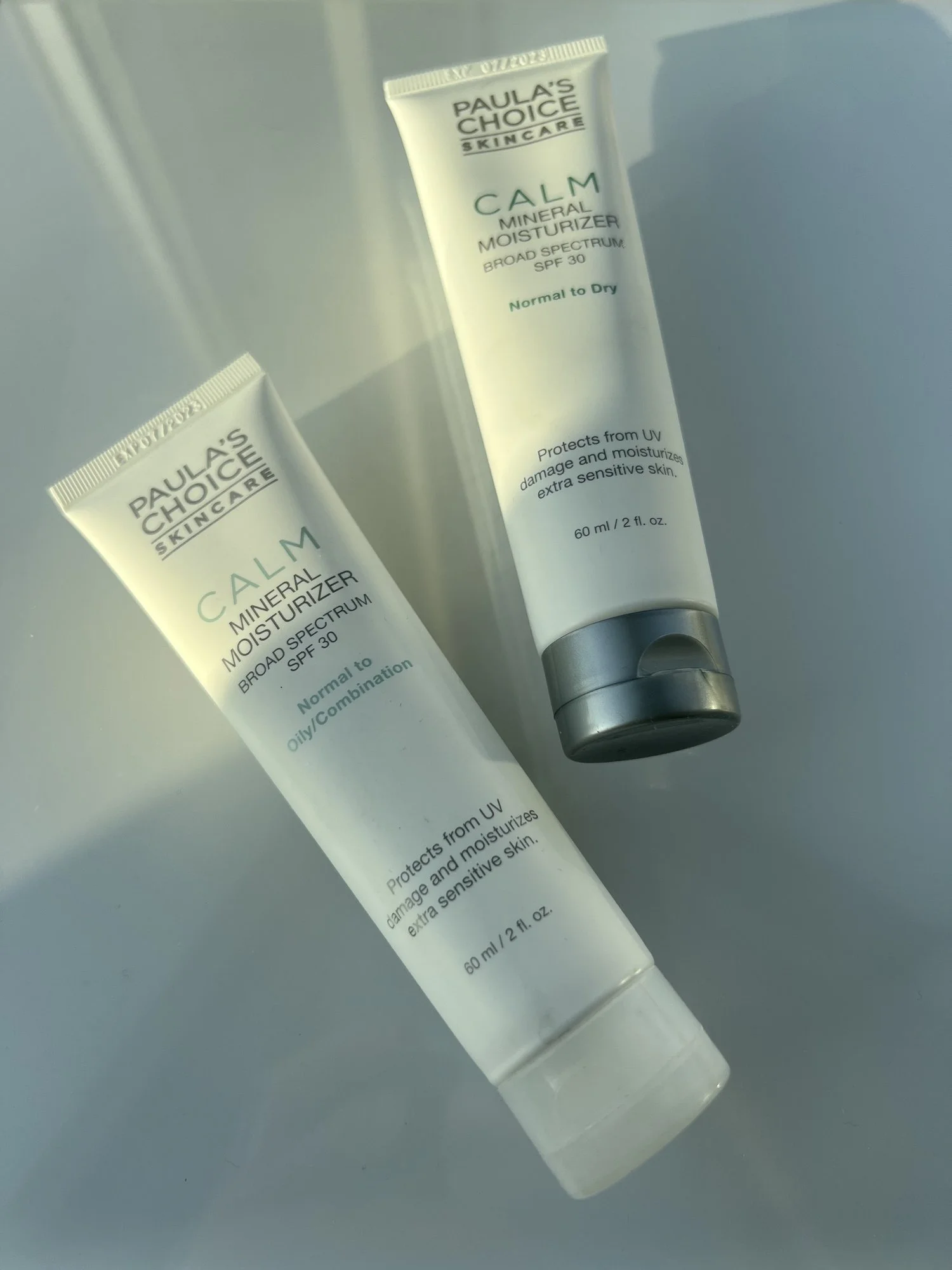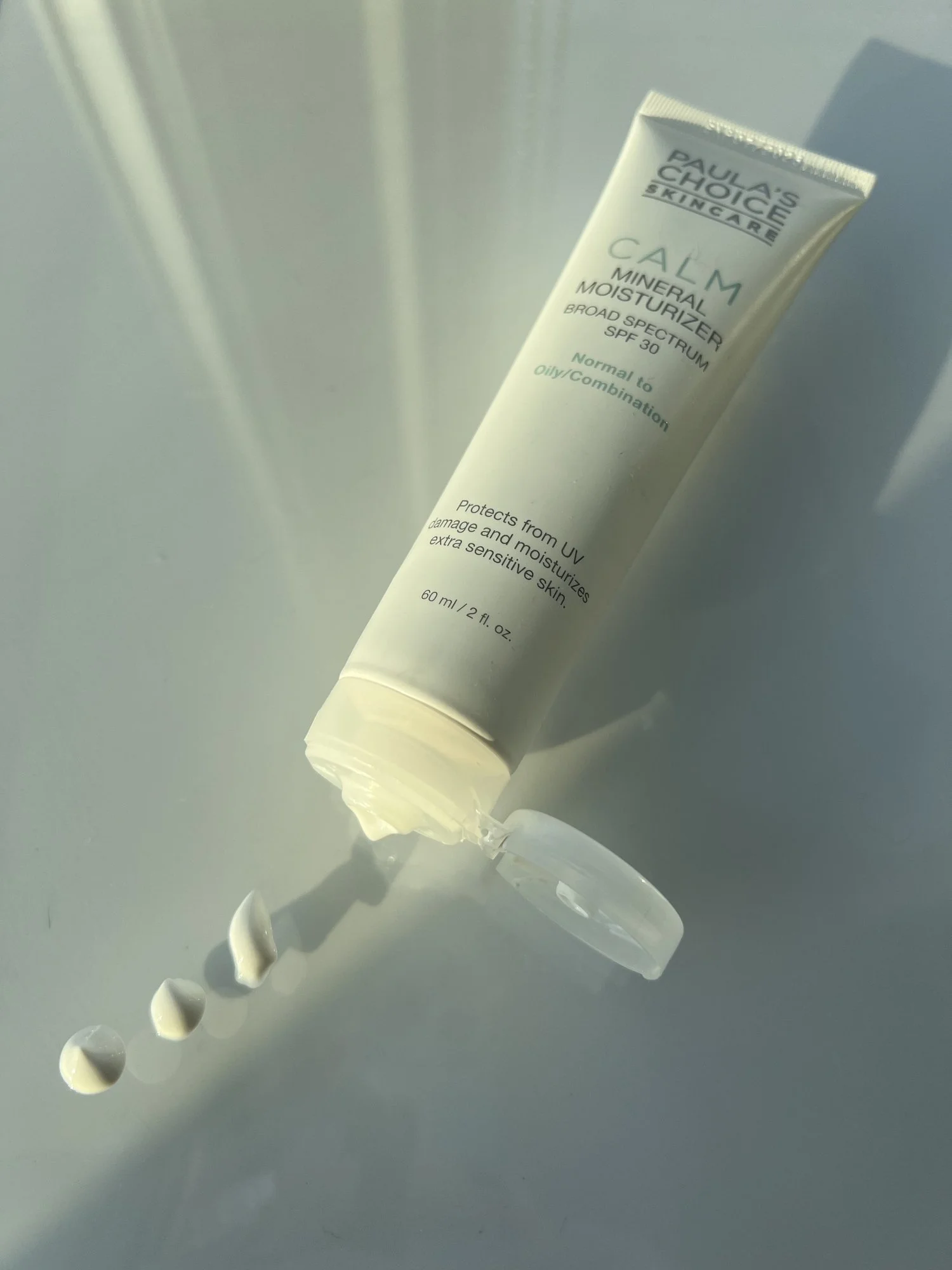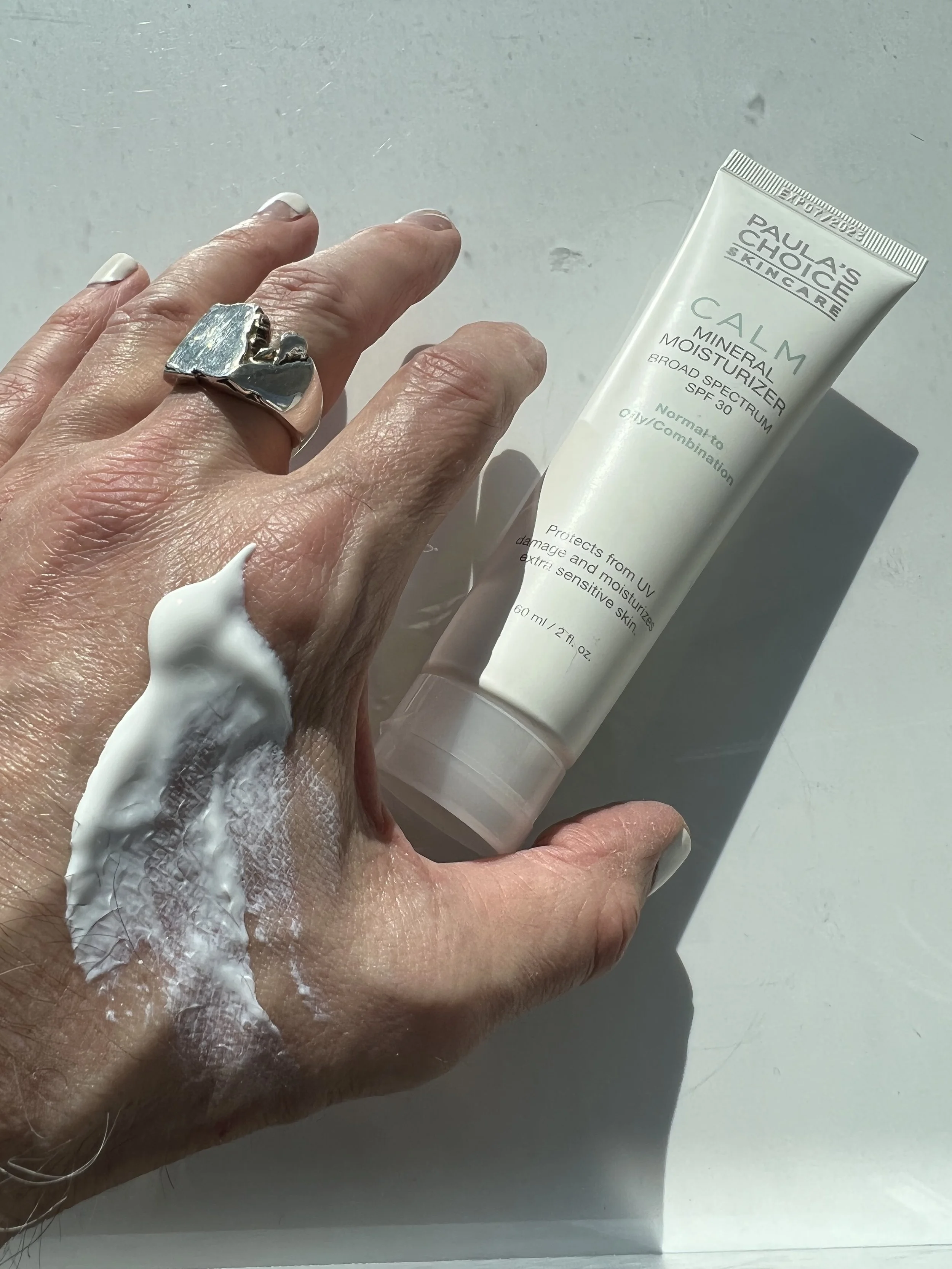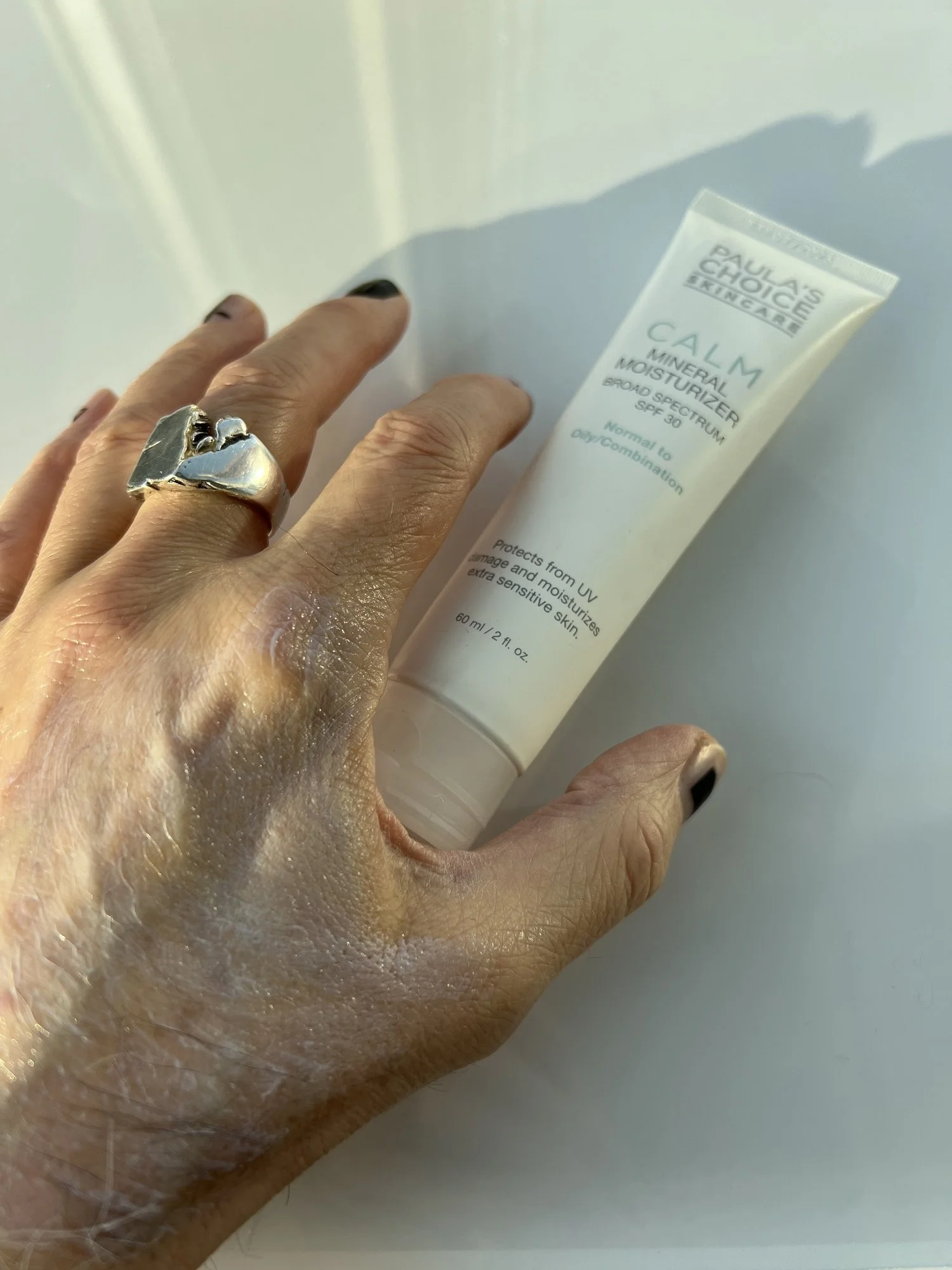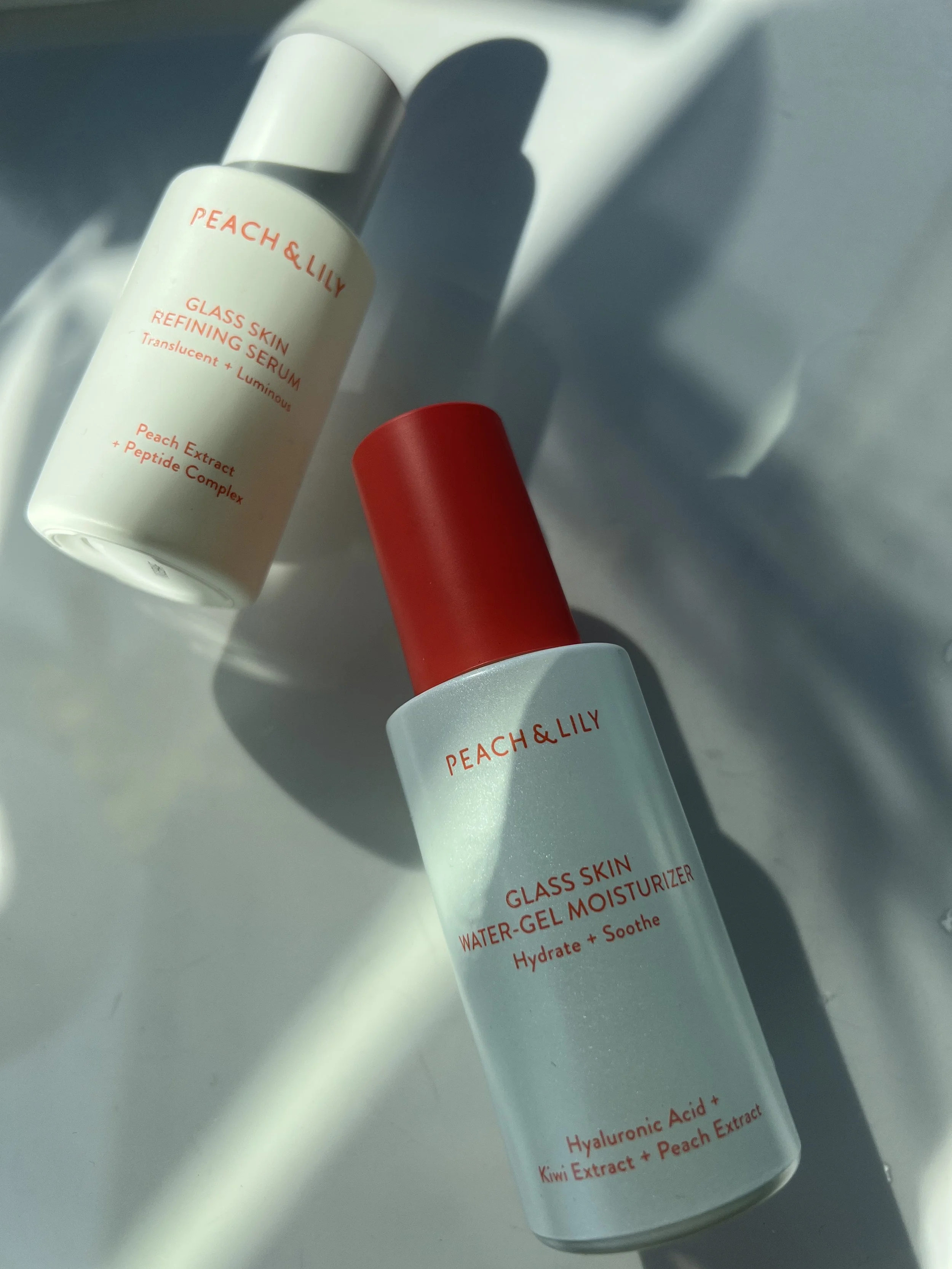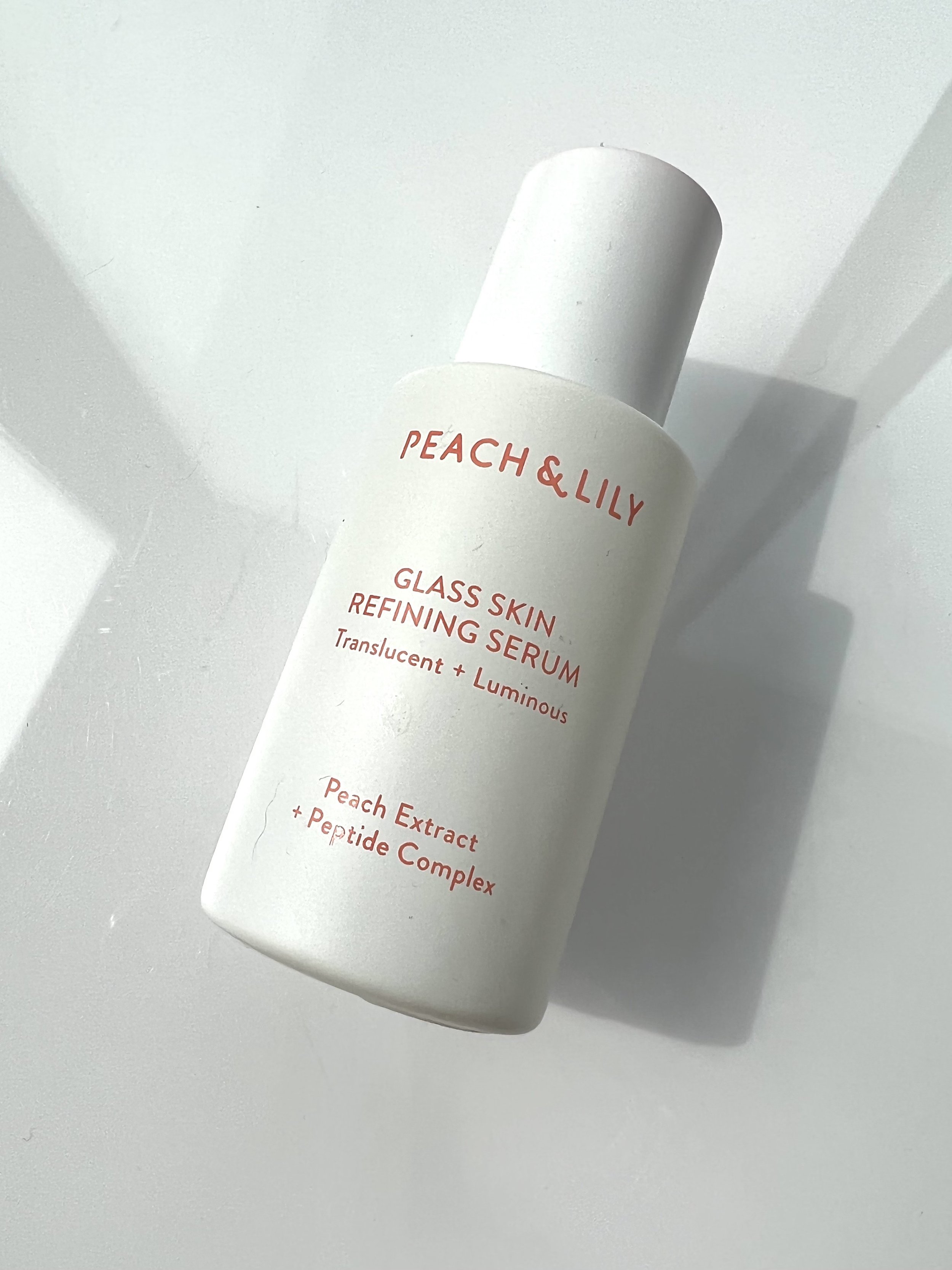THE BEST LIGHTWEIGHT SUMMER MOISTURIZERS SS22 FROM SKINFIX, THE INKEY LIST AND PEACH & LILY – BEST FACE CREAM FOR OILY SKIN, WHICH LIGHT MOISTURIZER IS BEST?
I love the change of seasons! When the temps turn from the chill of winter to the warmer, more pleasant days of spring and summer, it’s the perfect time to play with new skincare products.
And nothing makes me happier than new skincare products — except of course hugs from Orpheus.
Of course, warmer weather means lighter textures. Lighter moisturizers like gel-creams are my favorite face creams for summer. And I like lighter sunscreens, too.
There’s nothing more unpleasant on a hot August day than the New York City subway platform. And skincare that veils your skin is just not making the situation any more pleasant. When it’s in the 80s above ground, it’s in the 90s on the platform. I can feel the skincare running into my eyes as I write this. Those experiences on the subway taught me years ago how my skin reacts in the heat — and to pay attention to what it needs seasonally.
Skin needs a lot of the same things any day of the year, no matter the weather. It needs antioxidants. It needs sun protection. It needs hydration and it needs moisture. But its moisture needs change as the temperatures fluctuate. In winter, preventing dehydration is a real challenge. Dry skin, too.
What’s the Difference between Dry Skin and Dehydrated Skin?
Understandably, many people confuse the two. They’re not the same thing and it’s helpful to understand the difference in order to advance your skin health. In short, dry skin is a skin type in which one’s skin lacks enough oil to keep it moisturized. Dehydrated skin is a skin condition in which the skin is not sufficiently hydrated; that is, the skin’s water levels are too low.
For a deeper dive into the differences between dry skin and dehydrated skin, I turned to the experts on the Paula’s Choice Research Team. There’s a superb piece on the Paula’s Choice site titled, What is Dehydrated Skin & How to Choose the Best Products. Here is an excerpt:
Dehydrated skin often looks and feels like dry skin all over your face, but there's a major difference between the two: dehydrated skin is usually a temporary concern (with various surprising causes) and dry skin typically doesn't change over time. If you have dehydrated skin, your skin may also produce a normal or even excessive amount of oil on its surface.
"Dehydrated skin" is something we’re asked about frequently. It seems there’s a lot of confusion about what this skin concern is about. A major part of the confusion is that the term "dehydrated skin" is often used interchangeably with "dry skin" or "combination skin" but they are not the same! Dehydrated skin can occur in all skin types and is not exclusive to those with dry skin or combination skin.
The Difference Between Dry Skin and Dehydrated Skin
Having classically dry skin is easy to recognize. Dry skin frequently feels tight and dry, with no oil anywhere to be seen. This situation rarely fluctuates; skin feels dry all year long. The dryness might get worse depending on the climate, season, or activity, but regardless of those things, without great skin care products, the uncomfortable dry, tight feeling will persist.
As mentioned above, dehydrated skin can look and feel similar, but there’s a major difference: Dehydrated skin tends to come and go, it does not persist.
The Best Sunscreens For Eyes
On a cold, low-humidity day in January, skin needs more help holding water and moisture in as the dry air around us sucks the water out of our skin. That’s why your complexion is likely more dull and dehydrated in the winter. Fine, dehydration lines around the eyes appear. The complexion is sallow. So a heavier, occlusive face cream that locks in moisture does the trick.
In the summer, skin doesn’t need that occlusive layer. But that doesn’t mean your skin doesn’t need oil-based moisture and water-based hydration. Your skin loses water when you sweat. The hotter the air, the more you sweat. So a lighter face cream with effective levels of humectants like Glycerin, Aloe Vera and Hyaluronic Acid are the way to go.
Last summer, I featured some of my favorite moisturizers in a pair of articles titled, Super Lightweight Summer Moisturizers SS21 – Best Brightening Moisturizer, Best Face Creams For Oily Skin (And All Skin In The Heat!). You can catch Part 1 here and Part 2 here.
SUPER LIGHTWEIGHT SUMMER MOISTURIZERS SS21 PART 1 – BEST FACE CREAMS FOR OILY SKIN (AND ALL SKIN IN THE HEAT!)
Among my favorites of SS21 was the Paula’s Choice 0.3% Retinol + 2% Bakuchiol Treatment — one of the best anti-aging face creams. And while it may seem more like a Retinol serum for face and not a moisturizer with Retinol, it’s actually both, and makes the ideal lightweight anti-aging face cream any day of the year.
Product names can be deceiving as they’re often based on product positioning, not necessarily on what a product does. Paula’s Choice didn’t need another moisturizer with Retinol. The brand has a perfectly good one called Barrier Repair Moisturizer with Retinol. What they needed is for you and me to buy the 0.3% Retinol + 2% Bakuchiol Treatment and layer it over or under their other products. I can tell you as a copywriter in beauty, that’s how skincare marketing works!
The Best Brightening Serums
In my SS21 collection, I also loved the Wander Beauty Sight C-er Vitamin C Concentrate. The perfect brightening face cream with Vitamin C and Niacinamide, it’s also deceptively named. It has just the right blend of replenishing Squalane and water-binding humectants, including Glycerin and Hyaluronic Acid.
That’s in addition to its plethora of protective antioxidants in the form of botanical extracts as well as 5% Ascorbyl Tetraisopalmitate (Vitamin C) and 5% Niacinamide. So, call Sight C-er a concentrate, if you want; but what it is functionally is a damn good moisturizer.
PRODUCT REVIEW: WANDER BEAUTY SIGHT C-ER VITAMIN C CONCENTRATE
In anticipation of the spring and summer seasons, over the past several weeks I’ve been thinking about the lightweight face creams I would recommend for SS22. Rather than a two-part series, I consolidated it to three really well formulated moisturizers and one sunscreen for face that has become a favorite.
The first is the Skinfix Skin Barrier Restoring Gel Cream, which I reviewed on the blog in March, right as the product launched. If you’ve followed my blog for a while you know that the brand’s Triple Lipid-Peptide Face Cream is one of my favorite moisturizers for dry skin and all skins in winter. The new Skin Barrier Restoring Gel Cream is as well-formulated and a near-perfect hydrating face cream.
MY WINTER SKIN SAVIOR: SKINFIX BARRIER+ LIPID REPLENISHING SKINCARE - BEST ANTI-AGING CREAM
The Inkey List’s Omega Water Cream Moisturizer is hands-down the best moisturizer the brand has ever offered. With an ideal blend of hydrating and moisturizing actives, it’s the best face cream under $10. If you’re curious to try it, you can’t go wrong.
And just two weeks ago, I featured the Peach & Lily Glass Skin Water-Gel Moisturizer in an article titled, What Is Glass Skin? How to Get Glass Skin with the Peach & Lily Glass Skin Collection. If you missed it, you can catch it on the blog here. Step three in my glass skin routine, the brand’s Glass Skin Water-Gel Moisturizer is such a pleasure to use.
Let’s take a closer look at each of the lightweight face creams I’m recommending for SS22…
Skinfix | Skin Barrier Restoring Gel Cream
You may already know that the Skinfix Barrier+ Triple Lipid-Peptide Face Cream is my favorite cold weather face cream and I consider it essential to reversing and maintaining my skin health from December to February. TLPC saves my skin from sudden doom, also known as dryness and dehydration, throughout the winter! What makes it so exceptional? Well, TLPC does something no other moisturizer is clinically proven to do: it replenishes depleted skin lipids like fatty acids and ceramides. These lipids are essential for keeping the skin barrier strong and preventing dehydrating trans-epidermal water loss, or TEWL.
Yet as effective as it is, Triple Lipid-Peptide Face Cream is really rich and not for everyone — or for every day of the year. When the temps warm up, it can be a bit much, even for me! You can catch my review of the Skinfix Barrier+ Triple Lipid-Peptide Face Cream on the blog here.
In the early spring, I was fortunate to be among the first to experience the new Skinfix Skin Barrier Restoring Gel Cream. It’s not exactly a lightweight version of the brand’s iconic TLPC; rather Skin Barrier Restoring Gel Cream is a far lighter moisturizer with a similar ability to strengthen the skin barrier.
PRODUCT REVIEW: SKINFIX BARRIER+ TRIPLE LIPID-PEPTIDE FACE CREAM – BEST FACE CREAM FOR DRY SKIN
In fact, Skinfix’s new gel cream is clinically proven to strengthen skin barrier function in as little as an hour. In addition, it’s proven to deliver intense hydration for 72 hours, essentially preventing TEWL for up to three days.
Skin Barrier Restoring Gel Cream has a super light, classic gel-cream texture that glides on easily and is immediately absorbed into the skin. The texture makes it the ideal face cream for oily skin and I suspect oily skin types would really appreciate its texture. While the texture isn’t unique as far as gel creams go, IMO it’s likely the best gel-cream moisturizer on the market.
Regrettably, it’s such a common misperception that oily skin doesn’t need moisture or oil. All human skin needs oil-based moisture. Even the slickest, greasiest, most uncomfortably icky skins! Depriving skin of moisture replenishment only exacerbates the problem and can even make skin oilier as it compensates for the oil deprivation throughout the day. And, as all human skin, oily skin suffers from trans-epidermal water loss and subsequent dehydration, too.
What Is Trans-Epidermal Water Loss (TEWL)?
Trans-epidermal water loss, or TEWL, is the leading cause of dehydration — or insufficient water in the skin’s layers. Just as the body needs sufficient quantities of water each day to survive, the skin needs water to function in an optimally healthy manner.
For a deep-dive into trans-epidermal water loss, there’s an excellent article on the health website Skin Better titled, What Is Transepidermal Water Loss and Why Is it Important? It’s available to read here. In the piece, the author explains TEWL as follows:
“The skin is comprised of three primary layers: the epidermis, the outermost layer; the dermis or middle layer; and the hypodermis, the undermost layer. When water passes from the dermis through the epidermis and evaporates from the skin’s surface, this is known as transepidermal water loss (International Journal of Pharmaceutics).
While TEWL is a process that your skin naturally regulates, certain factors that can damage the skin’s barrier function can also affect TEWL levels. Circumstances such as injury, low-humidity weather conditions and topically applied products that dry out the skin can impact TEWL.
To achieve this, combine humectant and occlusive skincare ingredients.
Transepidermal water loss can contribute to a variety of dry skin conditions, and although it is a natural process, there are ways that you can help your skin stay moisturized and hydrated. Hydration refers to the water content of the skin, whereas moisturization is the skin’s ability to retain those water molecules. Therefore, your skin needs both elements to maintain desirable levels of TEWL.
To achieve this, combine humectant and occlusive skincare ingredients. Humectants help to draw moisture to the epidermis, either from the air if it is humid enough, or from the underlying dermis in low-humidity conditions. Because water content that is drawn from the dermis can be lost through TEWL, it’s important to combine the use of humectants with occlusives. Together, these ingredients create a reservoir of moisture in the epidermis and act as a barrier on the skin to help prevent TEWL by sealing in that moisture. The occlusive agents simultaneously keep pollutants, toxins and harmful bacteria out (Skin Therapy Letter).”
Beyond addressing skin’s basic needs, Skinfix took great pains to formulate a face cream that would address the more unique needs of both oily-prone and acne-prone skin types. In fact, one of the most interesting characteristics of their new gel-cream formula is what’s not in it — including many known triggers of fungal acne.
According to the brand, Skin Barrier Restoring Gel Cream is “free from a long list of ingredients including fragrance, silicone, dimethicone, parabens, sulfates, essential oils, formaldehyde, phthalates, lanolin, petrolatum, propylene glycol, PEGs, gluten and the many known triggers of malassezia folliculitis aka ‘fungal acne’.”
The Most Important Product You're (Probably) Not Using!
What’s even more intriguing to me about Skin Barrier Restoring Gel Cream is the inclusion of a powerful and unusual active, Saccharide Isomerate — a skin-similar sugar carbohydrate that binds skin cells together in a tight mesh to prevent TEWL.
It’s this precise ingredient that delivers the formula’s sustained hydration benefit over for 72 hours. I first learned of Saccharide Isomerate in the new Skinfix formula and have seen it included in several new products since.
If you have oily or acne-prone skin, give the new Skinfix Skin Barrier Restoring Gel Cream a try. And, if you have normal, combination, or moderately dry skin, it’s ideal for you as well in the warmer months ahead.
What I like about it: The Skinfix Skin Barrier Restoring Gel Cream is as well-formulated as the brand’s iconic Triple Lipid-Peptide Cream. Both have legitimate clinically proven skin barrier-strengthening qualities. I love the new gel cream’s super lightweight texture, making it ideal for oily skin and nearly all skin types in the warmer months. In addition, it’s uniquely formulated without ingredients that can cause fungal acne to proliferate, making it one of the best face creams for acne-prone skin, too.
What I don’t like about it: I’m hard-pressed to think of anything I don’t like about it. Of course, it won’t deliver sufficient moisture replenishment during the colder months, but you and I have TLPC for that!
Who it’s for: All skin types, but especially oily and/or acne prone skins.
SHOP THE BLOG: Purchase the Skinfix Skin Barrier Restoring Gel Cream for $48 here.
The Ingredient List of the Skinfix Skin Barrier Restoring Gel Cream:
 sii|emo 0 1, Propanediol solv|h, Niacinamide
sii|emo 0 1, Propanediol solv|h, Niacinamide  cci|sb|aacne|h, Triheptanoin emo, Saccharide Isomerate
cci|sb|aacne|h, Triheptanoin emo, Saccharide Isomerate  h, Ammonium Acryloyldimethyltaurate/VP Copolymer vc, Zinc Pca
h, Ammonium Acryloyldimethyltaurate/VP Copolymer vc, Zinc Pca  aacne|h, Hydrolyzed Hyaluronic Acid
aacne|h, Hydrolyzed Hyaluronic Acid  h, Allantoin
h, Allantoin  so 0 0, Camellia Sinensis Seed Extract h|perf, Leptospermone, Flavesone, Isoleptospermone, Acetyl Heptapeptide-4 h, Citric Acid buff, Sodium Citrate chel|buff, Caprylyl Glycol h|emo, Trisodium Ethylenediamine Disuccinate chel, C12-20 Alkyl Glucoside emu|surf, C14-22 Alcohols, Ethylhexylglycerin pres, Potassium Sorbate pres, Phenoxyethanol pres
so 0 0, Camellia Sinensis Seed Extract h|perf, Leptospermone, Flavesone, Isoleptospermone, Acetyl Heptapeptide-4 h, Citric Acid buff, Sodium Citrate chel|buff, Caprylyl Glycol h|emo, Trisodium Ethylenediamine Disuccinate chel, C12-20 Alkyl Glucoside emu|surf, C14-22 Alcohols, Ethylhexylglycerin pres, Potassium Sorbate pres, Phenoxyethanol presThe Inkey List | Omega Water Cream Moisturizer
I love discovering new things. Whether it’s cool TikTok beauty hacks, innovative skincare treatments or delicious vegan treats, it’s the little things that make my days delightful.
Just ahead of vegan donuts on the delight scale are innovative skincare products. And when it comes to cool, new stuff I’d never imagined, let alone heard of, The Inkey List has long been an innovation machine.
One of my favorite new Inkey products over the past year is the brand’s Succinic Acid Acne Treatment. I’m always seeking out new acne products — and particularly gentle, effective blemish serums and creams that don’t dry out the skin and compromise the delicate microbiome. That only perpetuates the acne cycle; it’s the reason so many people struggle with acne longterm.
PRODUCT REVIEW: THE INKEY LIST SUCCINIC ACID ACNE TREATMENT – BEST ACNE TREATMENT FOR SENSITIVE SKIN
The Succinic Acid Acne Treatment has become one of my go-to blemish treatments for my occasional breakouts. It’s quite effective — and never dries out my skin. I have Inkey innovation to thank for that!
Over the last several months, the brand has been on a roll with multiple new product introductions and I’ve been excited to give them all a try. Three of them stand out to me, featured on the blog in an article titled, Products I'm Into: New Stuff From The Inkey List. You can catch the piece here.
One of the three products is The Inkey List’s Omega Water Cream Moisturizer. It’s a wonderfully light, refreshing lotion that’s slightly thicker than a conventional gel-cream — like the Skinfix Skin Barrier Restoring Gel Cream. With the change of seasons and warmer weather upon us, it couldn’t have come at a better time.
As I said, things are heating up here in NYC and I’ve been switching up my skincare to lighter, fresher, more comfortable textures. And I was eager to try out The Inkey List’s Omega Water Cream Moisturizer, which was introduced in March. Similar to the Skinfix Skin Barrier Restoring Gel Cream, the new gel-cream moisturizer from The Inkey List has a light, refreshing texture that feels like nothing on the skin – perfect for a warm spring day.
And not unlike the Skinfix TLPC, the Omega Water Cream Moisturizer is formulated with bio-compatible lipids that the skin craves — and soaks right up. The Inkey List has infused their new, velvety gel-cream with what the brand identifies as a 0.5% concentration of “Ceramosides.” I believe these appear in the formula INCI as both glycosphingolipids and glycolipids.
What Are Skin Lipids and Are Lipids Good for Skin?
There’s an insightful article on the Dermstore website titled, The Role of Lipids—Cholesterol, Ceramides and Fatty Acids—in the Aging Process which you can read here.
Lipids in Your Skin
In a nutshell, lipids are skin’s natural fats. They are essential components of skin and play a crucial role in maintaining the strength of the skin’s protective barrier, which holds moisture, protects the skin from damage and keeps dirt and impurities out. They also aid the skin’s natural repair process. While there are many types of lipids, these three are the most prevalent—and important—for the skin.
Cholesterol: This lipid helps accelerate the skin barrier’s recovery and improve the appearance of skin elasticity. Visible skin aging is often caused by cholesterol deficiency on the skin. It’s important to note that cholesterol on your skin is different from the cholesterol found in the blood, and having more of it on your skin won’t cause your blood pressure to spike.
Ceramides: This type of lipid is proven to increase the skin’s hydration and barrier function. Ceramide deficiency is the main cause of dry skin.
Fatty acids: Abundant in young, healthy skin, fatty acids help maintain the skin’s lipid balance.
The Role of Topical LipidsHealthy, youthful skin has an abundance of these naturally occurring lipids. As we age, lipid production declines, and this can result in rough surface texture, uncomfortable tightness, dullness and loss of facial fullness. A compromised skin barrier is also more prone to irritation and water loss. This is why it’s important to counter the effects of lipid loss with a topical treatment—but not just any topical treatment.
What are glycolipids? Well, according to the experts on the Paula’s Choice Research Team, glycolipids are a lipid, or fat, that’s composed of both lipids and sugar. I don’t know that glycolipids are any more beneficial for the skin than other more common lipids like ceramides and fatty acids. Skin (like taste buds!) loves fats of all kinds.
A basic moisturizer for just about $10, The Inkey List’s Omega Water Cream Moisturizer is the best face cream the brand has offered to date. In addition to the pro-skin health, replenishing glycolipids that help to prevent trans-epidermal water loss, it’s infused with humectants that help to bind to and hold water in the skin.
But what I love most in the product’s INCI is the approximate 5% concentration of brightening, antioxidant Niacinamide. That’s a significant amount of Niacinamide, which is generally at or below the recommended 2% for a face cream.
Bravo Inkey!
PRODUCTS I'M INTO: NEW STUFF FROM THE INKEY LIST - BEST EXFOLIATING SERUM WITH MANDELIC ACID
What I like about it: The Inkey List Omega Water Cream Moisturizer is IMO the best face cream the brand has offered to date. I love its light, refreshing texture that’s quickly absorbed by the skin. Its blend of occlusive and water-binding lipids and humectants is ideal for preventing TEWL. And, the 5% concentration of antioxidant Niacinamide is exceptional for a moisturizer.
What I don’t like about it: I like everything about it. It’s a simple, affordable and effective moisturizer for everyone. Could it use a few protective antioxidants? Sure. But that would needlessly bump up the price.
Who it’s for: All skin types, especially oily skins.
SHOP THE BLOG: Purchase The Inkey List Omega Water Cream Moisturizer for $9.99 here.
The Ingredient List of The Inkey List Omega Water Cream Moisturizer:
 sii|h 0 0, Niacinamide
sii|h 0 0, Niacinamide  cci|sb|aacne|h, Propanediol solv|h, Betaine
cci|sb|aacne|h, Propanediol solv|h, Betaine  h, Polyglyceryl-4 Isostearate emu, Coco-Caprylate/Caprate emo, Magnesium Sulfate vc, Glycosphingolipids emo, Glycolipids, Sodium Benzoate pres, Disteardimonium Hectorite vc, Oleic Acid emo|emu, Potassium Sorbate pres, Citric Acid buff, Polyglycerin-3 h
h, Polyglyceryl-4 Isostearate emu, Coco-Caprylate/Caprate emo, Magnesium Sulfate vc, Glycosphingolipids emo, Glycolipids, Sodium Benzoate pres, Disteardimonium Hectorite vc, Oleic Acid emo|emu, Potassium Sorbate pres, Citric Acid buff, Polyglycerin-3 hPeach & Lily | Glass Skin Water-Gel Moisturizer
If you didn’t catch my recent piece on glass skin, you can find it on the blog here in an article titled, What Is Glass Skin? How To Get Glass Skin With The Peach & Lily Glass Skin Collection. What I consider the third step in Peach & Lily’s Glass Skin routine is the brand’s Glass Skin Water-Gel Moisturizer.
And as crazy as it seems, if I thought that the Skinfix Skin Barrier Restoring Gel Cream and Inkey’s Omega Water Cream Moisturizer were ideal face creams for a hot, humid day, the Peach & Lily Glass Skin Water-Gel Moisturizer is even more so.
In fact, with its eerily light watery gel texture, I’d say the brand’s Glass Skin Water-Gel Moisturizer is the lightest face cream I’ve ever come across. Like the iconic J-beauty sunscreen, the Skin Aqua Super Moisture Milk, I suspect it may be made with alien technology. It’s that unique!
I’m literally so excited to have the Peach & Lily Glass Skin Water-Gel Moisturizer available to me this summer. But besides its otherworldly texture, what makes it so exceptional and the ideal moisturizer for a glass skin routine?
To start, the Glass Skin Water-Gel Moisturizer is formulated with an effective blend of hydrators that help skin hold water and prevent TEWL. These of course include tried-and-true humectants like Glycerin, Sodium Hyaluronate, Hydrolyzed Hyaluronic Acid and Beta-Glucan.
But there are numerous hydrating botanical extracts in the formula, as well, that form a powerhouse complex that helps to instantly hydrate skin and keep it hydrated throughout the day. In the summer, water loss is the result of excessive sweating. The skin’s water content literally seeps out through your pores. And a well-formulated hydrating face cream like Peach & Lily’s Glass Skin Water-Gel Moisturizer is the perfect solution.
Among the formula’s most notable hydrating botanicals are Calendula Flower Water, Kiwi Fruit Extract, Peach Fruit Extract and Chamomile Flower Water — all in the INCI’s top ten.
This stuff is just so refreshing!
Glass skin requires more than just gentle exfoliation and intense hydration. In order to attain a healthy glow day after day, skin needs to be in balance. And that means paying attention to the surface microbiome. When the microbiome is out of whack, redness, irritation, sensitivity and even acne are the result.
In addition to its blend of hydrators and humectants, the Peach & Lily Glass Skin Water-Gel Moisturizer contains the brand’s proprietary vegan prebiotic and probiotic complex that can help to balance and fortify the surface microbiome to optimize skin health.
What’s the difference between prebiotics and probiotics in skincare? Think of prebiotics as the food for the healthy bacteria, or probiotics. A blend of the two is ideal for keeping skin healthy and balanced — and for maintaining a glowing glass skin complexion.
What I like about it: The Peach & Lily Glass Skin Water-Gel Moisturizer just may be the lightest moisturizer I’ve ever come across. Its watery gel texture is so unusual, it quite possibly may be the result of alien technology. I also love its effective blend of humectants and hydrating botanical extracts at very high concentrations. It’s ideal for oily skin and all skin types on a hot, humid day.
What I don’t like about it: I like everything about it.
Who it’s for: All skin types, especially oily and acne-prone skin.
SHOP THE BLOG: Purchase the Peach & Lily Glass Skin Water-Gel Moisturizer for $40 here.
The Ingredient List of the Peach & Lily Glass Skin Water-Gel Moisturizer:
 sii|h 0 0, Propanediol solv|h, 1,2-Hexanediol solv, Calendula Officinalis Flower Water perf, Sodium Hyaluronate
sii|h 0 0, Propanediol solv|h, 1,2-Hexanediol solv, Calendula Officinalis Flower Water perf, Sodium Hyaluronate  sii|h 0 0, Hydrolyzed Hyaluronic Acid
sii|h 0 0, Hydrolyzed Hyaluronic Acid  h, Actinidia Chinensis (Kiwi) Fruit Extract emo, Prunus Persica (Peach) Fruit Extract abrasive/scrub|h, Anthemis Nobilis (Chamomile) Flower Water, Bambusa Textilis (Bamboo) Stem Extract, Arctium Lappa (Burdock) Root Extract
h, Actinidia Chinensis (Kiwi) Fruit Extract emo, Prunus Persica (Peach) Fruit Extract abrasive/scrub|h, Anthemis Nobilis (Chamomile) Flower Water, Bambusa Textilis (Bamboo) Stem Extract, Arctium Lappa (Burdock) Root Extract  aox|so, Morus Alba (Mulberry) Leaf Extract, Morus Alba Fruit Extract aox, Leuconostoc/Radish Root Ferment Filtrate amic|pres, Apium Graveolens (Celery) Extract, Lactobacillus Ferment
aox|so, Morus Alba (Mulberry) Leaf Extract, Morus Alba Fruit Extract aox, Leuconostoc/Radish Root Ferment Filtrate amic|pres, Apium Graveolens (Celery) Extract, Lactobacillus Ferment  so|pres, Beta-Glucan
so|pres, Beta-Glucan  so|h, Fructooligosaccharides h, Glycyrrhiza Glabra (Licorice) Root Extract
so|h, Fructooligosaccharides h, Glycyrrhiza Glabra (Licorice) Root Extract  so|sb, Sodium Acetylated Hyaluronate
so|sb, Sodium Acetylated Hyaluronate  h, Myrciaria Dubia Fruit Extract, Ganoderma Lucidum (Mushroom) Extract, Butylene Glycol h|solv 0 1, Melia Azadirachta Leaf Extract, Melia Azadirachta Flower Extract, Adenosine
h, Myrciaria Dubia Fruit Extract, Ganoderma Lucidum (Mushroom) Extract, Butylene Glycol h|solv 0 1, Melia Azadirachta Leaf Extract, Melia Azadirachta Flower Extract, Adenosine  cci, Trisodium Ethylenediamine Disuccinate chel, Carbomer vc 0 1, Ethylhexylglycerin pres, Morus Alba Twig Extract, Morus Alba Bark Extract, Tromethamine buff, Xylose h, Tocopherol
cci, Trisodium Ethylenediamine Disuccinate chel, Carbomer vc 0 1, Ethylhexylglycerin pres, Morus Alba Twig Extract, Morus Alba Bark Extract, Tromethamine buff, Xylose h, Tocopherol  aox 0-3 0-3
aox 0-3 0-3Paula’s Choice Redness Relief SPF 30 Mineral Moisturizer
I consider myself one of the biggest Paula’s Choice fans. So it’s funny to me that I can still discover products from Paula’s Choice I haven’t tried and that go on to blow me away. Especially a sunscreen!
For well-formulated daily sunscreens, there’s probably no brand except Supergoop! that I trust as much as Paula’s Choice.
So I’m hyped to (finally!) try the Redness Relief SPF 30 Mineral Moisturizer. There are actually two formulations: one for oily skin and one for dry skin. Both moisturizers with sunscreen are part of the Calm collection and formulated to “pamper sensitive, reddened skin” with “a redness-minimizing mix of soothing plant extracts, antioxidants, and peptides work to calm sensitive skin.”
And each is formulated to deliver an SPF 30 level of protection to the skin. If you think that seems low, it helps to understand that SPF 30 blocks 97% of UVB rays while an SPF 50 blocks 98% of UVB rays — a difference of just one percent.
Best Paula’s Choice Products
How Much UV Is Blocked by Sunscreen and What Percent of UV Rays Are Blocked by Sunscreen?
SPF 15 blocks 93% of UVB rays
SPF 20 blocks 95% of UVB rays
SPF 30 blocks 97% of UVB rays
SPF 50 blocks 98% of UVB rays
So, the difference between SPF 30 and SPF 50 is about 1 percent.
As I’ve said, I don’t have sensitive skin; rather, I can experience sensitized skin on occasion — admittedly self-inflicted. The Redness Relief SPF 30 Mineral Moisturizer seems ideal for anyone in either camp. And as such, the product is great for all skin types, whether your skin is combination, oily, dry or normal on most days (like mine!).
Each of the Redness Relief SPF 30 Mineral Moisturizers is made with two common mineral sun filters: Titanium Dioxide and Zinc Oxide.
What’s uncommon about Redness Relief is the formula’s cocktail of skin-soothing actives: Allantoin, Chamomile Flower Extract, Green Tea Leaf Extract, Licorice Root Extract, and Aloe Leaf Juice. All are tried-and-true ingredients for calming irritation. Combining them isn’t a breakthrough, but it’s ideal for very sensitive skin.
What’s the Difference between Mineral and Chemical Sunscreens?
While I prefer mineral sunscreens, I truly believe what’s most important is to find a sunscreen you like to use so much that you wouldn’t think of skipping it — even on cloudy, seemingly sunless days. If that’s a chemical sunscreen, perfect. One of my favorite sunscreens of all time is a chemical sunscreen. The Supergoop! Daily Dose Vitamin C + SPF 40 Sunscreen Serum PA+++ is so welll-formulated and such a pleasure to use that I get excited to apply it. You can catch my review of it here.
But I know chemical sun filters can be controversial. For insights on the two types of sun filters, chemical and mineral (pr physical), there’s an excellent article by the Paula’s Choice Research Team titled, Mineral vs. Synthetic Sunscreen Ingredients available here. In the piece, the experts explain the differences and benefits between mineral and chemical sunscreens — and even dispel a myth or two:
“The two types of sunscreen ingredients are mineral and synthetic [chemical], and both are equally protective. Further reassuring is that each can be included in formulas created for every skin type. For example, if you have normal to oily skin, there are weightless, non-greasy options; if you have normal to dry skin, it’s possible to find skin-smoothing, hydrating SPF products.
What’s the Difference Between Mineral and Synthetic Sunscreen Ingredients?
The differences aren’t about which type is more effective; rather, it comes down to personal preference and how sensitive your skin is—mineral sunscreens are considered the most gentle options.
Mineral sunscreens: There are only two mineral sunscreen ingredients: titanium dioxideand zinc oxide. They work in skin's uppermost layers to both absorb and, to a lesser extent, deflect and scatter the sun’s harmful rays. These mineral ingredients are sometimes referred to as physical sunscreens or physical blockers, although that’s not a factual representation of how they work.
Synthetic sunscreens: There are over 30 synthetic sunscreen ingredients, all of which absorb into the top layers of skin, where they work similar to mineral sunscreens: by scattering and deflecting the sun’s harmful rays, and by converting UV rays into heat and “deactivating” them. (Don’t worry, you won’t feel a thing.) Common synthetic sunscreen ingredients include oxybenzone, octinoxate, octisalate, and avobenzone. These are sometimes labeled “chemical sunscreens,” which is both misleading and false. All skin care ingredients, even water, are chemicals.
The oily skin version, the Redness Relief SPF 30 Mineral Moisturizer for Normal to Oily Skin, is heavy on hydrators, light on oils, and has a wonderfully lightweight, silky texture. I’ve been obsessed with this version over the last couple of weeks and have nearly used it up.
On the other hand, the Redness Relief SPF 30 Mineral Moisturizer for Normal to Dry Skin, the dry skin variation, is a bit heavier, contains the same skin-soothing cocktail and multiple replenishing plant oils, including Apricot Kernel Oil at ingredient number four. It’s rich, but not too rich.
If you have a concern for sensitive (or sensitized!) skin, the two Paula’s Choice Calm Redness Relief SPF 30 Mineral Moisturizers were made for you!
What I like about it: The Redness Relief SPF 30 Mineral Moisturizer for Normal to Oily Skin is one of the best sunscreens for oily skin that I’ve come across. With such a lightweight, blendable texture, it’s crazy to me that it’s a mineral sunscreen. And, I’m impressed with its potent blend of skin-soothing actives for calming sensitivity. If you have oily skin, blemish prone skin or sensitive skin, this is your sunscreen. If you have dry, sensitive skin, the Redness Relief SPF 30 Mineral Moisturizer for Normal to Dry Skin is the perfect option.
What I don’t like about it: Honestly, both formulas are near-perfect sunscreens. (I leave perfection to Mother Nature!) The only improvement I can imagine is to bump up the sun protection to an SPF 50. But, as I shared earlier, the difference in the level of UV rays blocked by SPF 30 and SPF 50 is a mere one percent.
Who it’s for: All skin types, especially sensitive skins.
SHOP THE BLOG: Purchase the Paula’s Choice Redness Relief SPF 30 Mineral Moisturizer for Normal to Oily Skin for $31 here. (Or select the dry skin version here.)
That’s it guys! Thanks for checking in on the Skincarma Blog! I hope this helps you discover the perfect summer moisturizer that delivers the right level of pro-skin health actives and comfort.
And don’t forget a sunscreen!
See you next week…
💟 Carmine @skincarma
The Ingredient List of the Paula’s Choice Calm Redness Relief SPF 30 Mineral Moisturizer:
 so 0 0, Chamomilla Recutita Matricaria Flower Extract (Skin-Soothing)
so 0 0, Chamomilla Recutita Matricaria Flower Extract (Skin-Soothing)  so|aox 0 0, Camellia Sinensis Leaf Extract (Green Tea Extract/Skin-Soothing)
so|aox 0 0, Camellia Sinensis Leaf Extract (Green Tea Extract/Skin-Soothing)  aox|so, Glycyrrhiza Glabra Root Extract (Licorice Extract/Skin-Soothing)
aox|so, Glycyrrhiza Glabra Root Extract (Licorice Extract/Skin-Soothing)  so|sb, Alumina (Stabilizer) vc|abrasive/scrub, Aloe Barbadensis Leaf Juice (Hydration/Skin-Soothing)
so|sb, Alumina (Stabilizer) vc|abrasive/scrub, Aloe Barbadensis Leaf Juice (Hydration/Skin-Soothing)  so|h, Glycerin (Hydration)
so|h, Glycerin (Hydration)  sii|h 0 0, Panthenol (Skin Replenishing)
sii|h 0 0, Panthenol (Skin Replenishing)  so|h 0 0, Algae Extract (Skin Replenishing)
so|h 0 0, Algae Extract (Skin Replenishing)  emo|h, Lauryl PEG-9 Polydimethylsiloxyethyl Dimethicone emu|surf, Polyhydroxystearic Acid (Texture-Enhancing) emu, Triethoxysilylethyl Polydimethylsiloxyethyl Hexyl Dimethicone (Texture-Enhancing), Caprylyl Glycol (Preservative) h|emo, Butylene Glycol (Hydration) h|solv 0 1, Diethylhexyl Carbonate (Stabilizer) emo, Triethoxycaprylylsilane (Texture-Enhancing), Disodium EDTA (Stabilizer) chel, Phenoxyethanol (Preservative) pres, Chlorphenesin (Preservative) pres|amic
emo|h, Lauryl PEG-9 Polydimethylsiloxyethyl Dimethicone emu|surf, Polyhydroxystearic Acid (Texture-Enhancing) emu, Triethoxysilylethyl Polydimethylsiloxyethyl Hexyl Dimethicone (Texture-Enhancing), Caprylyl Glycol (Preservative) h|emo, Butylene Glycol (Hydration) h|solv 0 1, Diethylhexyl Carbonate (Stabilizer) emo, Triethoxycaprylylsilane (Texture-Enhancing), Disodium EDTA (Stabilizer) chel, Phenoxyethanol (Preservative) pres, Chlorphenesin (Preservative) pres|amicWATCH MY VIDEO REVIEW
NIACINAMIDE IS THE GAME CHANGER YOU NEED - THE BEST NIACINAMIDE SERUMS FROM PAULA'S CHOICE & MORE!
ON MY YOUTUBE CHANNEL HERE
WATCH MY VIDEO REVIEW
I’M GETTING #SELFCARESUNDAY LIT! 🔥 POWERING UP MY BRIGHTENING WITH MAYSAMA BEAUTY!
ON MY YOUTUBE CHANNEL HERE
WATCH MY VIDEO REVIEW OF
SKINCARE HACKS: GLYCOLIC ACID IS THE NATURAL DEODORANT THAT WORKS!
ON MY YOUTUBE CHANNEL HERE
WATCH MY VIDEO REVIEW
COOL CLEAN FACIAL SUNSCREENS TO KEEP US SAFE AND SMILING IN THE SUN!
ON MY YOUTUBE CHANNEL HERE
WATCH MY VIDEO REVIEW
THE YEAR’S BEST VITAMIN C SERUMS WITH PAULA'S CHOICE, SUNDAY RILEY, THE INKEY LIST AND MORE!
ON MY YOUTUBE CHANNEL HERE
WATCH MY VIDEO REVIEW
THE BEST HYALURONIC ACID SERUMS FROM PAULA'S CHOICE, THE INKEY LIST, GHOST DEMOCRACY & MORE
ON MY YOUTUBE CHANNEL HERE
WATCH MY VIDEO REVIEW OF
A SELFCARE SUNDAY NOT FOR THE FAINT OF HEART – WITH THE PAULA’S CHOICE 25% AHA PEEL!
ON MY YOUTUBE CHANNEL HERE
WATCH MY VIDEO REVIEW
MY 2021 VITAMIN C PICKS + THE BEST VITAMIN C SERUMS TO BRIGHTEN UP THE COMPLEXION!
ON MY YOUTUBE CHANNEL HERE


